philosophie (278 résultats)
Type d'article
- Tous les types d'articles
- Livres (249)
- Magazines & Périodiques (5)
- Bandes dessinées
- Partitions de musique
- Art, Affiches et Gravures (3)
- Photographies
- Cartes
-
Manuscrits &
Papiers anciens (21)
Etat
Reliure
Particularités
- Edition originale (120)
- Signé (24)
- Jaquette (3)
- Avec images (239)
- Sans impression à la demande (276)
Livraison gratuite
Pays
Evaluation du vendeur
-
Eleven works from the library of Eleanor Marx Aveling.
Edité par Boston, Geneva, Hamburg, Lille, London, Madrid, Milan and Zurich, 1871-1894., 1894
Vendeur : Antiquariat INLIBRIS Gilhofer Nfg. GmbH, Vienna, A, Autriche
8vo and 12mo. 11 volumes, mostly in unsophisticated wrappers, stored loosely in contemporary green cloth covers (138 x 205 mm) and preserved within a green half morocco solander case. Unique collection of eleven early, extremely rare publications by Marx and Engels, including English, Italian and Polish translations of the Communist Manifesto, Russian and Spanish translations of "Misère de la philosophie", as well as English and Italian editions of "Discours sur la question du libre échange". From the personal collection of Karl Marx's youngest daughter Eleanor ("Tussy") Marx (1855-98), the companion of the socialist Edward Aveling. One of the works in this collection bears her autograph ownership on the title page, while three others are inscribed to her, one by Friedrich Engels. An outstanding ensemble.
-
Misère de la philosophie. Réponse à la Philosophie de la misère de M. Proudhon.
Edité par Paris & Brussels, A. Frank & C. G. Vogler, 1847., 1847
Vendeur : Antiquariat INLIBRIS Gilhofer Nfg. GmbH, Vienna, A, Autriche
Edition originale
8vo. (VIII), 178 pp. (without the errata leaf). (Bound after) II: The same. Der Achtzehnte Brumaire des Louis Bonaparte. Zweite Ausgabe. Hamburg, Otto Meißner, 1869. VI, 98 pp. Contemporary half calf with marbled covers. Stored in custom-made red half calf solander case with giltstamped spine. Very rare first edition of Marx's famous text, directed against Pierre Joseph Proudhon and the utopian socialists, which led to a long and bitter feud between the authoritarian and the libertarian-anarchist wing. The half title bears Marx's autograph inscription to Anna Vivanti, née Lindau: "Madame Vivanti / Hommage de l'auteur. / Londres, 2 Marx 1872" (the final digit is slightly trimmed by the binder). Anna Vivanti (1828-80), a sister of the well-known German critic, writer and democrat Paul Lindau, had in 1853 married the wealthy silk merchant Anselmo Vivanti, an Italian revolutionary exiled in Britain. The families had known each other for a while: on Christmas Eve 1868 Jenny Marx had described Madame Vivanti in a letter to her sister Laura as "a strange little lady, ugly, deformed, but full of life and spirits [.] She is married to an Italian and is an ardent admirer of Dante, whose poetry she knows by heart. She reminded me so much of the woman Balzac depicts in his Recherche de l'Absolu" (Moscow Russian State Archive for Social and Political History, fond 7, opis 1, delo 11/3). In March 1870 Marx's daughter Jenny had been invited to Norwood to attend a function given by Madame Vivanti, and the 25-year old had a great success with a Shakespearean recitation; later that same year, in October, Anselmo, Anna and their little daughter Luisa had stayed with the Marxes in Hampstead. In 1872 Anna repeatedly tried to solicit from Marx articles for her brother's journal "Die Gegenwart". On 21 March 1872 she thanked Marx for his gift of the book: "[.] I would like to write you a few words about this exceptional book 'Misère de la Philosophie', which I am not a little proud to own, but I have a dreadful cold which makes my head heavy and dumb; also, I would fear to monopolize your valuable time with my silly writing [.]" (translated from German, IISG, D VIII 40 [12073]). - Bound first is the first independent printing of Marx's "The Eighteenth Brumaire of Louis Napoleon", originally published in the May 1852 issue of "Die Revolution". That both works were thus bound together for Anna Vivanti is evident from the binder's pencilled instructions on the final page of the "Misère": "Vivanti / ½ pelle". After Anna's death in 1880 the volume must have ended up in Milan with her widower Anselmo, who died there in 1890 soon after returning to his native country (previously, the widely admired hero of the Risorgimento had long served as President of the New York Chamber of Commerce). Four years later, the philosopher and socialist Antonio Labriola (1843-1904), one of the first propagandists of Marxism in Italy, acquired the volume for 25 lire at a Milan auction, as he reported to Engels in a letter of 3 August 1894: "Ho qui un volume legato, comprato a Milano auzione £25. Contiene oltre al 18 Brumaio, Misère d. l. Ph. originale, esemplare con dedica di Marx a Madame Vivanti (?) 2 (o 4) marzo 1873 (o 72, non chiaro)". It is this letter that led the editors of the Marx-Engels Gesamtausgabe falsely to assume that it was a copy of the "Eighteenth Brumaire" which Marx had inscribed to Madame Vivanti (cf. MEGA I, 11, p. 705). - Corners slightly bumped, but very finely preserved altogether. Both works somewhat browned, the first work more so, with some brownstaining to the title page and traces of an erased ownership stamp (possibly that of Labriola or a previous owner?). Contemporary pencil underlinings in the "Misère", perhaps reading notes by Anna Vivanti. One of the few copies of a Marx work known to have been inscribed by the author to a woman; among other female recipients of inscriptions by Marx are Luise Weydemeyer and Caroline Schoeler ("Das Kapital") as well as Natalja Utina (also the "Misère", with the author's corrections). - Marx-Engels Erstdrucke 11 & 22. Rubel 55 & 215. Goldsmiths' 35456.
-
Autograph letter signed.
Edité par London, 1. V. 1872., 1872
Vendeur : Antiquariat INLIBRIS Gilhofer Nfg. GmbH, Vienna, A, Autriche
Manuscrit / Papier ancien Edition originale
8vo. 1¼ pp. on bifolium. To the publisher Maurice Lachâtre concerning the French translator of "Das Kapital" Joseph Roy, the publication of the second German edition of "Das Kapital", and the Russian translation of the first edition, a possible reissue of Marx's early text "The Poverty of Philosophy", and the poor health of his grandson Étienne Lafargue: "Vous vous trompez! Monsieur Roy est français. Il a été (mais quand il était déjà un homme fait) pendant quelques années en Allemagne. Il traduit trop litéralement dans les passages faciles, mais il montre sa force dans les choses difficiles. Néanmoins, vos corrections me serviront toujours comme des matériaux utiles pour la correction définitive. La première livraison de la dernière édition allemande (le libraire allemand vous a imité en acceptant pour la dernière édition la forme de livraison) paraîtra probablement pendant la semaine suivante. J'ai reçu de St. Petersburgh la traduction russe (d'après la première édition). Elle est excellente. Le livre a dû passer par la censure, mais la censure n a rien rayé excepté mon portrait. Néanmoins, comme il y a dans le livre des attaques contre la Russie, l éditeur russe n est pas encore en dehors de tout danger. Pour la dernière correction j'ai ici l assistance de Longuet, Vaillant, Lissagaray et autres communards compétents. Vos nouvelles politiques m intéressent beaucoup et vous m'obligerez beaucoup en les continuant. À propos. Un libraire français (de Paris) - tout en me demandant de ne pas le nommer - m a offert de republier mon livre (français) contre Proudhon: Misère de la Philosophie. Réponse à la Philosophie de la Misère de M. Proudhon. Bruxelles et Paris 1847. L édition est complètement épuisée. J ai des mauvaises nouvelles de Madrid sur l état de santé du petit Lafargue [.]". - ("You are mistaken! Mr Roy is French. He spent (but when he was already a grown man) some years in Germany. He translates simple passages too literally but shows his strengths when it comes to more difficult things. Nevertheless, your corrections will always serve me as useful material for the final correction. The first instalment of the latest German edition (the German publisher is imitating you by accepting the mode of instalments for the latest edition) will probably appear during the next week. I have received from St. Petersburg the Russian translation (off the first edition). It is excellent. The books had to pass censorship but the censors haven't effaced anything except my portrait. Nevertheless, since there are attacks on Russia in the book, the Russian editor is not yet fully out of danger. For the last correction I have here the assistance of Longuet, Vaillant, Lissagaray and other competent members of the Commune. By the way. A French publisher (from Paris) - who asked me not to mention his name - offered me to reissue my book (French) against Proudhon: The Poverty of Philosophy. A reply to 'The Philosophy of Poverty' of M. Proudhon. Brussels and Paris 1847. This edition is completely sold out. I have bad news from Madrid concerning the health condition of the little Lafargue [.]"). - Nine hundred copies of the Russian translation of "Das Kapital" were published in 1872 and, to Marx's surprise, quickly sold out. A French re-edition of "The Poverty of Philosophy" did not come forward during Marx's lifetime. Like his two siblings, Étienne Lafargue, the son of Paul Lafargue and Karl Marx's second daughter Laura, did not reach adulthood but died at the age of four in Madrid in May 1872. - Slightly creased. - Not in: Marx/Engels, Werke vol. 33 (Briefe Juli 1870 - Dezember 1874).
-
Gesammelte Werke / Musarionausgabe * G A N Z L E D E R - V o r z u g s a u s g a b e, numeriertes Expl. Nr.15/15 der Monumentalausgabe
Edité par München, Musarion Verlag,, 1929
Vendeur : Galerie für gegenständliche Kunst, Kirchheim unter Teck, Allemagne
Livre Edition originale
Vollständige Ausgabe in den originalen Verlags-Luxuseinbänden: 23 aufwendigst hergestellte Handeinbände (schwarzes geglättetes Kalbsleder / Ganzleder / Leder im Format 17,5 x 24,5 cm) mit Kopfgoldschnitt, goldgeprägte Rückentitel auf 2 Titelschildern, Verzierung des Rückens und beider Deckel in Linien-Handvergoldung, Steh- und Innenkantenvergoldung, handgestochenes Kopfband und Goldkopfschnitt. 21 Textbände und 2 Registerbände, mit 4 Porträts und 7 (davon eines gefaltet) zumeist mehrseitigen Fakisimiles. Erste, im Auftrag von Elisabeth Förster-Nietzsche veranstaltete Werkausgabe, enthaltend u.a. auch bis dahin unveröffentlichte Jugendschriften, herausgegeben von Dr .Richard Oehler, Max Oehler und Dr. Friedrich Chr.Würzbach. - In insgesamt 1.600 Expl. gedruckt, davon 185 in Ganzpergament und 15 in Ganzleder auf Japan-Velinpapier, gebunden von A.Köllner / Leipzig; dieses Expl. trägt die Nr.15. - Kostbarste Ausführung dieser Monumentalausgabe. Eine dieser 15 Ganzlederausgaben erhielt Benito Mussolini im 2. Weltkrieg von Adolf Hitler als Staatsgeschenk des Großdeutschen Reiches; in der Kunstbuchbinderei Frieda Thiersch / München arbeitete ein Buchbindermeister daran volle 2 (!) Jahre, um für diese - ohnehin schon prachtvolle Ausgabe - noch wesentlich aufwendigere Einbände zu schaffen (vgl. Fritz Krinitz, Frieda Thiersch und ihre Handbuchbinderei, Stuttgart 1968; das Führergeschenk an den Duce dort als Abb.10). - "Warum handgebunden? - Die wesentlichsten Vorzüge des guten Handbandes sind: Die einzelnen Druckbögen werden mit der Hand nach dem Schriftspiegel gefalzt. Die Bogenränder werden dadurch zwar ungleich, aber das Satzbild steht gerade. Um infolge der ungleichen Ränder ein späteres zu starkes Beschneiden mit der Maschine zu vermeiden, werden die Bogen einzeln, vorne und unten, mit der Pappschere auf ein Mittelmaß rauh beschnitten. Dadurch wird der Druckrand weitestgehend geschont. Als erste und letzte Lage wird dem Buche zum Schutze eine leere Papierlage hinzugefügt, welche mit einem feinen Leinen- oder echten Japanpapierfalz versehen ist. Geheftet wird der Handband nach sorgfältiger Auswahl des Heftzwirnes auf echten erhabenen oder aufgedrehten flachen Bünden und auf Pergamentriemchen (welche beim Pergamentbande durch den Rücken gezogen werden). Oben wird das Buch beschnitten und erhält nicht nur der Schönheit willen Goldschnitt, sondern diese feine Metallschicht schützt vielmehr die dem Lichte und Staub am meisten ausgesetzte Schnittfläche vor deren schädlichen Einflüssen. Die Deckel werden in einem tiefen Falz angesetzt, mit den Bünden nach außen. Ein Herausreißen aus der Decke ist somit nur unter Zuhilfenahme von Werkzeug möglich. Zum Kapital wird kein schlappes maschinengewebtes Bändchen verwendet, sondern das Kapital wird von Hand mit dem Buchblock umstochen, gibt dadurch dem Rücken einen festen Abschluß und bietet zugleich dem späteren Ledereinschlag ("Häubchen") die Unterlage. Als Einbandmaterial kommen sumachgares, lichtechtes Saffian, Kalbleder, vereinzelt auch Rindsleder, ferner naturelles und weißes Schweinsleder sowie Kalbspergament zur Verwendung. Ein mit der Hand hergestelltes, dazu passendes Überzugpapier sowie Handvergoldung oder Blinddruck am Rücken ergänzen das Werk nach außen. Ein solcher Einband entspricht allen Anforderungen, die an einen Gebrauchsband gestellt werden können." Aus einem alten Prospekt von Richard Hönn /München. - Meistereinband, Handeinband, deutsche Kunstbuchbinderei im 20. Jahrhundert, Handvergoldung, Luxusausgabe, Prachtausgabe, Gesamtausgabe, Vorzugsausgabe, illustrierte Bücher, Monumentalausgabe, deutsche Philosophie im 19. Jahrhundert - Feinste deutsche Buchbinderarbeit: insgesamt wohlerhaltenes, ansehnliches Exemplar, ledigleich bei einigen Bänden kleine Kratzer im Leder, an einigen Stellen etwas feuchtigkeitsfleckig, Bünde teilweise leicht beschabt, sonst tadellos Versand an Institutionen auch gegen Rechnung Sprache: Deutsch.
-
Autograph manuscript.
Edité par No place or date.
Vendeur : Antiquariat INLIBRIS Gilhofer Nfg. GmbH, Vienna, A, Autriche
Manuscrit / Papier ancien
Folio. 12 pp. on 3 bifolia, numbered 140-142. Numerous corrections, deletions, and insertions. The manuscript discusses cosmogony and the movement of the planets, mentioning the contributions made by Immanuel Kant and especially Laplace, as well as Kepler's Laws, then expanding these considerations to the level of metaphysics. This is the working manuscript for vol. 2, chapter 6 ("Zur Philosophie und Wissenschaft der Natur") of Schopenhauer's collection of philosophical reflections, "Parerga und Paralipomena" ("Appendices and Omissions") - the philosopher's final work, published in 1851. The "Paralipomena" volume, from which this is taken, contains short ruminations arranged by topic under 31 subheadings. In view of the less-than-enthusiastic reception of the philosopher's earlier publications, publishers were reluctant to commit to this work; it was only after significant difficulty (and through the persuasion of the philosopher's disciple Julius Frauenstädt) that Hayn of Berlin consented to publish the two volumes in a print run of 750 copies - with a honorarium of only ten copies for the author. The subject matter and stylistic arrangement of the "Paralipomena" were significant influences on the work of the philosopher and psychologist Paul Ree, and through him most notably on the philosopher Friedrich Nietzsche, whose later work explores - following Schopenhauer - the relation of man to himself, the universe, the state, and women through the art of aphorism. - In the present manuscript, Schopenhauer writes: "The truth of cosmogony, however, is based not only on the space-relationship upon which Laplace insisted, namely, that 45 celestial bodies circle in a uniform direction and at the same time rotate likewise; more firmly still is it rooted in the time-relationship, expressed by the first and third Law of Kepler [.] These thoughts on cosmogony give rise to two metaphysical reflections [.] Even such a far-reaching physical explanation of the world's creation can never satisfy the desire for a metaphysical one, or indeed take its place. On the contrary! The closer one comes to tracking down a phenomenon, the more clearly it appears that it is precisely that: a mere phenomenon, an apparition, and not at all the essence of the thing in itself [.]" (transl.). - The present text begins with the final paragraph of § 85. It corresponds with the printed text in the Sämtliche Werke, ed. by A. Hübscher, vol. 6, p. 142, line 4 up to p. 150, line 19, with the exception of two sections not yet present in this draft (p. 146, lines 11-16, and p. 146, lines 32-page 147, line 7). Most of the parts which Schopenhauer deleted are published in vol. 7, pp. 130-138 and p. 138. - Slight edge damage. Provenance: On loan to the Dresden State Library until 1945; later in a foreign private collection. Sold at Stargardt's auction on Oct. 4, 1989. Schopenhauer manuscripts are of the utmost rarity: auction records since 1975 list only five other autograph manuscripts, only one of which was of comparable length.
-
Autograph letter signed ("Karl Marx").
Edité par [London], 41 Maitland Park Road, 28. VIII. 1878., 1878
Vendeur : Antiquariat INLIBRIS Gilhofer Nfg. GmbH, Vienna, A, Autriche
Manuscrit / Papier ancien
8vo (115 x 175 mm). Ink on paper. ½ p. Stored in custom-made red half morocco case. To "Mess. Longmans & Co", in English: "Sirs, The firm of Faesy and Frick (Vienna) have asked me to forward them through you 2 copies of my book 'Misere de la Philosophie'. Please to inform them that the edition is completely exhausted. I have myself in vain tried to get some copies second hand for a correspondent at St. Petersburgh. Yours obediently [.]". - Traces of a vertical and horizontal fold. Well preserved. - Not in: Marx/Engels, Werke vol. 34 (Briefe Januar 1875 - Dezember 1880).
-
Zeiller/Merian: Topographia Germaniae, Gallilae und Italiae, komplett in 31 Bänden -Unikum-
Edité par Merian, Frankfurt, 1642
Vendeur : Antiquariat Vlma, Herbrechtingen, Allemagne
Livre Edition originale
Hardcover. Etat : Gut. 1. Auflage. Zeiller, Martin - Merian, Matthäus: Komplette Topographia Germaniae. 31 Bde. bzw. Teile sowie Gesamtregister in zus. 18 Bdn. Frankfurt, M. Merian, C. Merian u. Merian Erben, Boissard, de Bry 1642-1736. Fol. Gr.-4to.(ca. 32:22 cm). Gesprenkelte Kalbsldr.-Bde der Zeit auf 6 Bünden über Holzdeckeln mit reicher RVerg. und RSchild. Blindgepr. Streicheisen-, Stempel- u. Rollbandornamentik mit floralen und ornamentalen Elementen. 5 Bände davon im gleichen Stil hervorragend nachgebunden. "Vollständige Reihenwerke werden praktisch nicht mehr angeboten. Sammler sind gezwungen, die Bände einzeln zusammenzukaufen" (Wüthrich) Die umfangreichste deutsche Topgraphie des 17. Jahrhunderts, Lebenswerk Merians und Glanzstück Frankfurter Buchkunst. Meist in ersten Ausgaben und mit schönen, satten Abdrucken der Kupfer. Insgesamt schönes, sehr gut erhaltenes und in dieser Vollständigkeit in so frühen Auflagen sehr seltenes, Exemplar in einheitlicher Bindung der Zeit. Herausragende Provenienzen: Besitzvermerk auf 3 Kupfertitel von Jacob Wilhelm Tetzel [ Jacob Wilhelm Tetzel von Kirchensittenbach stammt aus dem Nürnberger Patriziat, studierte in Altdorf und lebte Ende des 17. Jahrhunderts. ]. Aus der Bibliothek von Markus Philipp Burk mit dessen handschriftlichem Besitzvermerk von 1800 und 1-seitiger Annotationen und heute noch gültigem Register! ( * 08. Juni 1755 in Hedelfingen/Esslingen - 06. November 1815 in Weiltingen). Er studierte die Humaniora 1768-1770 in Denkendorf und 1770-1772 in Maulbronn, danach Philosophie und Theologie an der Universität Tübingen 1772-1777. Im Jahre 1787 wurde er Diakon in Liebenzell und ab 1795 Pfarrer in Weiltingen. Er gab mindestens 30 Schriften heraus und war bekannt für seine seltene Kunstsammlung. Des Weiteren in allen Bänden das Exlibris des deutschen Generalkonsul in Buenos Aires, Berliner Unternehmers und Sammlers Richard Staudt * 1888 in Berlin; gest. 1955 in Buenos Aires). In der Reihenfolge des vorhandenen Registers von 1726, wie sie eingebunden sind: 1. Österreich Topographia Provinciarum Austriacarum. 1649, Anhänge 1736 (seltene EA) mit 2 Anhängen Wüthrich IV 43, 49a;b Windhaag, Reichenau, Petronell. 2. Böhmen - Mähren - Schlesien. Topographia Bohemiae, Moraviae et Silesiae. 1650, EA. 3. Schwaben. Topographia Sueviae. 1643 (EA mit Schw. Hall und Hohenzollern). 4. Bayern. Topographia Bavariae. 1644. Kupfertitel, 3 Karten u. 54 Tafeln mit 100 Darstellungen. Mit den später hinzugefügten Tafeln Schloß Hellabrunn und Berchtesgaden 1+2; dem Wappenkupfer nach S. 69; Rain; Regensburg; Tegernsee (6) - W. IV, 19, S. 109. EA mit d. seltenen Kupferverz.5. Elsaß. Topographia Alsatiae. 1644. 2 Karten u. 37 Tafeln mit 55 Darstellungen- W. IV, 15, Sch.26.A. Gesamt IV + 53 + VI S.-Erste Ausgabe. Dagsburg (Vianden) mit dem Dopelblatt, vergl. W.S. 89. Dünnes Blatt auf S. 9/10 - Vor den Band Pfalz gebunden. Vollständig. 6. Rheinpfalz. Topographia Palatinatus Rheni. mit Zuegab 1645. Kupfertitel, 3 Karten u. 58 Tafeln mit 97 Darstellungen. - W. IV, 24. Erste Ausgabe. - Mit den später hinzugefügten Tafeln Heidelberg von Süden + Großes Faß; Osterburg + Lindenfels + Meisenheim; Lambrecht + Sinsheim + Wiesloch; Lambsheim + Lauterecken + Hagenbach (siehe W. 4 S. 135). 7. Mainz - Trier - Köln mit Anhang. Topographia Archiepiscopatuum Trevirensis et Coloniensis. 1646, mit Anhang 1654. 8. Franken. Topographia Franconiae. 1648 (EA). 9. Hessen. Top. Hassiae. 1646 (EA). 10. Westfalen. Topographia Westphaliae. (1647) (EA). 11. Niedersachsen. Topographia Saxoniae inferioris. 1653. (EA). 12. Braunschweig-Lüneburg (2. Aufl.). 13. Obersachsen. Topographia Superioris Saxoniae Thüringiae, Misniae, Lusatiae. (2. Aufl.). 14. Brandenburg - Pommern. 15. Schweiz (EA). 16. Niederlande. Topographia Germaniae Inferioris. 17-29. Frankreich. Topographia Galliae. 13 Tle. in 3 Bdn. 1655-61 (EA). 30. Italien mit Anhang. Topographia Italiae & Anhang Königreich Morea. 1688. (EA). 31. Rom. 32. Hauptregister. 1726. Komplette Ausgabe bis auf Tafel "Rotterdam".
-
Anekdota zur neuesten deutschen Philosophie und Publicistik von Bruno Bauer, Ludwig Feuerbach, Friedrich Köppen, Karl Nauwerk, Arnold Ruge und einigen Ungenannten.
Edité par Zürich & Winterthur, Verlag des Literarischen Comptoirs, 1843., 1843
Vendeur : Antiquariat INLIBRIS Gilhofer Nfg. GmbH, Vienna, A, Autriche
Edition originale
8vo. 2 vols. in one. IV, 320 pp. IV, 288 pp. Modern half calf. First edition, comprising both volumes. Contains Marx's first political pamphlet, the anonymous "Bemerkungen über die neueste preußische Censurinstruction. Von einem Rheinländer" (in vol. I, p. 56-88). Another anonymous essay, "Luther als Schiedsrichter zwischen Strauß und Feuerbach" (II, 206-208), has also been attributed to Marx, though Feuerbach may also have been the author of this brief piece. - Marx had sent Ruge his manuscript of the "Bemerkungen" from Trier on 10 February 1842 as a submission to the "Deutsche Jahrbücher", asking him for the time being not to reveal the author's identity to anyone save the publisher. Indeed, the essay was not published there, but in Ruge's present collection of "Anekdota", printed in Switzerland and comprising such contributions as either had been not admitted by the Saxon censorship or which he had not even bothered to submit. - Published in January 1843, the "Anekdota" appeared at the very moment when the liberal, democratic-leaning German press was particularly vigorously suppressed. The book struck a sensational blow against the pettily bureaucratic, reactionary censorship in the German countries by unmasking specifically the Prussian and Saxon censors' bias against all progressive scholarship and writing (cf. I. Taubert/W. Schuffenhauer, Marx oder Feuerbach?, in: Beiträge zur Marx-Engels-Forschung [1975], p. 37). - Contemporary Viennese ownership stamp to title page. Occasional slight foxing, but a very good copy altogether. - Rubel 27 & 28. Stammhammer II, 10. Friedlaender 35. MEGA I.1, 151-175.
-
10 eigenh. Briefe m. U.
Edité par Luzern, 1870-1871., 1871
Vendeur : Kotte Autographs GmbH, Roßhaupten, Allemagne
Manuscrit / Papier ancien
8vo. 28 1/2 pp. Umfangreiche Brieffolge an den Schriftsteller Hans Herrig (1845-1892) aus Wagners Tribschener Zeit. Während Herrigs Berliner Jahre fand im April 1870 die Erstaufführung von Wagners Meistersinger von Nürnberg" statt, die zu einem Theaterskandal gerieten. Herrig wohnte diesen Aufführungen bei und schriebe ein Gedicht an Wagner, worauf ein Briefwechsel zwischen den Beiden entstand.1. 17.IV.1870: Möge es Sie nicht in Verlegenheit gesetzt haben, dass ich Sie öffentlich citirte, um Ihnen den schönen Eindruck bezeugen zu können, den ich durch Ihre Verse erhielt! Mir kommt es eben nicht häufig vor, geistvolle Zusprüchen erwidern zu dürfen. Wer heute durch solch ein Operntheater zum deutschen Herzen zuzurufen hat, der hat sich auf andere Echo s gefasst zu machen, als es mir diesmal aus dem Ihrigen widerhallte. Mit den ,Meistersingern ist mir es nun wohl zum letzten Mal begegnet, dass ich so als applaussuchender, und demnach auch auszupfeifender Operncomponist behandelt werden konnte. Mit keiner meiner Arbeiten gedenke ich auf diesem Wege wieder die Oeffentlichkeit zu suchen. Somit haben Sie Dank dafür, dass ich diesmal noch etwas Schönes durch Sie antreffen konnte". 2. 6. V. 1870: [ ] Ich möchte Sie gern recht nahe kennen lernen. Nun müssen Sie aber wissen: ich werde in diesem Monat 57 Jahre alt. Die Erfahrungen, welche ich an Ihnen machte, gehören der dritten Generation an, an welcher ich Erfahrungen mache. Die zweite Generation meiner Erfahrungen ist bereits ganz von mir aufgegeben [ ]"3. 3. VI. 1870: [ ] Da ,Sie namentlich zu meinem Geburtstag mich reich beschenkt haben, trage ich mich mit dem Gedanken, wie ich Ihre sinnige Begegnung überhaupt erspriesslich erwidern könnte. Ich komme darauf zurück, dass Sie mich besuchen sollten. Welche sind nun die Schwierigkeiten, die sich der Ausführung des - wie es scheint - beiderseitigen Wunsches entgegenstellen? Sind sie rein materieller Art, so dürften sie am besten zu besiegen sein, denn hier käme es auf ein unumwundenes, einfaches Wort an. Sie können sich von mir hierin leicht helfen lassen, wenn Sie sich für eine Expedition nach Luzern ,meiner als Intendanten bedienen wollen. [ ] P.S. Lassen Sie doch den ,ewigen Juden fahren! Der ist ein widerwärtiges Wesen, und führt gewiss unvermeidlich in das Allegorische. Die geschichtliche Gestalt darf uns nur dadurch reizen, dass sie fest und körnig plastische Individualität ist. Durch eine solche - wie durch ein Fernglas - auf die Welt blicken, statt durch den Sturm der Natur auf das menschliche Herz (wie beim Mythus), muss uns das geschichtliche Dichterwerk geben: aber das geht mit solch einem mythischen Juden nicht. Ausserdem - diese Juden haben uns das Christenthum von vorn herein ruinirt; sie ruiniren uns jetzt wieder unsre deutsche Litteratur, Musik u. sonstige Kunst. Geben wir diesem Unrath so wenig wie mögliche Bedeutung - Nein! Ich bitte Sie: nichts davon, weder von zeitlichen noch ewigen Juden. Es gibt anderes!"4. 21.VII. [ ] Ich bin jetzt auf dem Punkt vor der musikalischen Ausarbeitung des I Aktes meiner ,Götterdämmerung ein wenig auszuruhen. In dieser Mussezeit beabsichtige ich etwas Eingehenderes über ,Beethoven und die deutsche Nation auszuarbeiten. Die kriegerische Catastrophe schien mir zunächst die Ausführung dieser Absicht unmöglich zu machen: doch kehrt mir die Besinnung wieder, und ich glaube ein gutes Zeugnis für meinen Glauben an die Bestimmung der Deutschen abzulegen, wenn ich gerade jetzt meine Abhandlung ausarbeite. Wann die Zeit ihrem Erscheinen günstig sein wird, mag Gott wissen! Die Franzosen prahlen mit einem ,kurzen Krieg; Besonnenere meinen, ein längerer Krieg sei einfach durch den Finanzstand der Staaten unmöglich gemacht. Ich muss dagegen annehmen, dass wenn der Krieg kurz abgemacht wird, er nicht viel taugen kann. Wer hat es deutlicher im Gefühl als ich, dass nur eine furchtbare Anstrengung die Deutschen nicht nur aus dieser augenblicklichen Bedrohung, sondern überhaupt für ihre Bestimmung retten könnte? Auch meine Kunst wäre in den Sand geschrieben, wenn jene schrecklich-erquickliche Annahme nicht in Erfüllung ginge [ ]"5. 21.IX.1870: [ ] Ich habe eine Bitte an Sie. Möchten Sie wohl die Güte haben, den Buchhändler Herrn Stilke (Stilke & van Muyden) 96. Friedrichstrasse, aufzusuchen, um ihm in meinem Namen eine grössere Broschüre von mir ,Beethoven zum Verlag anzubieten. Bei meinem längeren Entfernthalten von allem Verkehr mit Deutschland bedaure ich besonders, keine Gelegenheit zu haben einmal mit einem ordentlichen Verleger in Verbindung zu treten. J. J. Weber ist mir schon der compromittirenden Gesellschaft wegen, in welcher ich bei ihm mich befinde, unerträglich geworden; dazu sind meine Schriften im Verlage von Leipziger Musikhändlern (welche mir sonst zu Gebote stehen,) auch stets falsch untergebracht, so dass ich mich nach einem wirklich tüchtigen Buchhändler sehne, von welchem ich andernseits voraussetzen dürfte, dass er die Bedeutung meiner Kunstschriften begreift und ihre Zukunft, für welche ich durch eine Gesammtausgabe sorgen möchte, erkennt. Im Gespräch mit meiner Frau wurde mir nun seit länger schon Herr Stilke [ ] genannt [ ] Die Arbeit wird im Druck mindestens den Umfang von ,Deutsche Kunst deutsche Politik einnehmen; in einem kleinen Vorwort bezeichne ich sie al eine ideale Festrede von einem idealen Auditorium, zugleich aber als einen Beitrag zur Philosophie der Musik. Mein Wunsch wäre dass mit dem Druck sogleich begonnen würde, damit die Schrift um die Zeit der zu erhoffenden Beruhigung der öffentlichen Verhältnisse, also am Vorabend der 100jährigen Geburtstagsfeier Beethovens zur Ausgabe fertig werde [ ]"6. 5.X.1870: [ ]Mein ,Beethoven wird Ihnen das deutlich machen, und Ihnen besonders als Dramatiker wird hier vermuthlich manches Stoff zum Nachdenken geben. Was sich nun aus dem Chaos unsrer ,öffentlichen Kunstmeinung für meinen höheren Lebenszweck Taugliches herauszustellen wird, hat nun bald Gelegenheit sich zu zeigen. Ich.
-
Encyclopédie ou Dictionnaire raisonné des Sciences, des Arts et des Métiers
Edité par Paris chez Briasson, David, Le Breton, Durand, Panckoucke, Stoupe et Brunet & Neuchatel chez Faulche & Amsterdam chez Rey
Etat : A. 35 volumes in folio ; veau marbré, dos à 6 nerfs richement ornés de caissons à fleurons et motifs dorés, pièces de titre bordeaux et lavallière (pour les 5 volumes de supplément), pièces de tomaison lavallière et vert (pour les 5 volumes de supplément), tranches rouges (reliure de l'époque).Provenance : De la bibliothèque de Henri Anne Salomon de La Tullaye, Marquis de Magnanne, conseiller du roi Louis XV, avec son ex libris manuscrit « HAS De La Tullaye » sur les titres des premiers volumes.35 volumes in-folio comprenant 17 tomes de texte, 11 tomes de planches, 5 tomes de supplément dont 1 de planches et 2 tomes de Table analytiqueÉdition originale de l'un des plus importants ouvrages jamais publiés.Magistrale « entreprise éditoriale, philosophique et scientifique » du siècle des Lumières dont l'objectif était de rassembler, vulgariser, synthétiser les connaissances de l'époque et ainsi favoriser la diffusion de la philosophie des Lumières, l'Encyclopédie ou Dictionnaire raisonné des sciences, des arts et des métiers fut éditée de 1751 à 1772 sous la direction de Diderot et d'Alembert qui s'entourèrent de plus de 150 collaborateurs français et étrangers : écrivains, philosophes, savants, dessinateurs, graveurs. Parmi les grands esprits de l'époque : Daubenton (histoire naturelle), Montesquieu (littérature), Rousseau (musique), Turgot (économie), . et bien entendu Diderot (histoire de la philosophie) et d'Alembert (mathématiques).Edité par souscription, ce Dictionnaire universel des arts et sciences devait comporter 10 volumes. La publication ayant été frappée d'interdiction temporaire en 1752, puis définitive en 1759 avec révocation du privilège royal, Diderot, afin de dédommager les souscripteurs, obtint un nouveau privilège pour l'édition d'un recueil de mille planches en taille-douce sur les sciences, les arts mécaniques. Onze volumes furent ainsi publiés entre 1762 et 1772. Les premiers volumes de texte (tomes I à VII) et planches (I à XI) parurent à l'adresse des libraires associés Le Breton, Briasson, David et Durand.L'élaboration de l'Encyclopédie se poursuivit entre-temps dans l'ombre. Dix volumes de texte (tomes VIII à XVII) furent imprimés de manière clandestine sous la direction du libraire Le Breton, sans privilège, à la fausse adresse de Samuel Faulche à Neuchâtel et à la date de 1765.En 1768, Panckoucke, libraire de l'Imprimerie royale et de l'Académie des sciences, racheta les droits et les cuivres aux libraires associés. Cinq volumes de Supplément dont un de planches furent publiés en 1776 et 1777, à Amsterdam chez Rey, et à Paris chez Panckoucke, Stoupe et Brunet sous la direction de J.B. Robinet. Les deux volumes de Table analytique par Pierre Mouchon parurent en 1780 à l'adresse de Panckoucke à Paris, et de Rey à Amsterdam.L'ensemble des 35 volumes de cette première encyclopédie française totalise 2 889 planches simples, doubles ou triples comptées 3 129, et plus de 18 000 pages de texte comprenant près de 74 000 articles. Son succès retentissant entraîna de nombreuses réimpressions et contrefaçons.Exemplaire dans une reliure en plein veau de l'époque relativement homogène, bien complet des 3129 planches dont une grande partie dépliantes (les planches doubles comptant pour 2, les triples pour 3 et les quadruples pour 4), du frontispice gravé par le Prévost d'après Cochin et du feuillet d'explication du frontispice livrés en 1772, des 3 planches supplémentaires de l'Hermaphrodite, des tableaux dépliants présents dans les tomes I, VII et VIII de texte, les tomes I, II et III du Supplément et le tome I de la Table analytique, des 2 ff. de « Table alphabétique des matières. » et du f. « Etat général des volumes de discours et de planches. » au tome XI de planches (in fine).Défauts aux reliures : quelques légères différences dans les reliures (pièces de tomaison différente pour les volumes 1, 2, 5 et 6 de texte), teinte légèrement plus claire pour les volumes 3, 5 et 6, quelques coiffes, queues et charnières usé.
-
Opus aureum calculationum.
Edité par Franciscus Girardengus, 1498
Vendeur : Sokol Books Ltd. ABA ILAB, London, Royaume-Uni
Livre
Soft cover. Etat : Very Good. INCUNABULAR MATHEMATICS ONE COPY IN US Folio. 324 x 226mm, ff. [80], a10 b-m6 n4. Gothic letter, double column. Blank foot of title (c.18 x 8cm) expertly repaired, few small light damp stains at blank gutter of first few ll., first two ll. lightly washed, a few painted lombard initials, ink splash on i4. A very good, wide-margined copy in C17 vellum, all edges sprinkled red and green, early ms title to spine, minor loss at foot. C18 partly rubbed ecclesiastical stamp (S. Franciscus Transtiberim?) to outer blank margin of a2, full-page ms S Francisci Transtiberim Anno DMDCXXXX [1700] Jesus et Mariae (faded) to last verso (blank), occasional C16 ms marginalia or maniculae. A fine wide-margined copy of the second edition of this most important C14 theoretical mathematical work - the first to apply mathematics to natural science (Leibnitz). Incunables on applied or theoretical mathematics, and works on these subjects written by English authors and published before 1500, are very rare. Richard Swineshead (or Suiseth or Suisset, fl.1340-54) was a mathematician and natural philosopher, and a member of the Oxford Calculators at Merton College. The Liber Calculationum (c.1350) was first printed in 1477 and here edited by the medicine professor Giovanni da Tollentino, probably comparing the first edition with a manuscript preserved in Pavia, preserving the frequent medieval abbreviations. The incipit of Liber calculationum (c.1350) calls it a very useful golden book on calculations which can be applied to all the sciences . Swineshead presupposes an Aristotelian/Neoplatonic physics, and searches for a logically adequate, mathematically precise account of it [ ]. He considers imaginary, physically impossible cases as long as they are not logically contradictory [ ] (Longeway, p.468). The 12 chapters begin by analysing the degrees of qualities (intension and remission), e.g. heat, according to whether their degree is uniform or not uniform; rarity and density (I.e., the proportion of quantity of matter to volume ); the power of an action (maximum and minimum) and of resistance when a body interacts with another; the movement of a body towards the centre of the earth (which, albeit moving slower and slower, it will never reach); light and how it illuminates and reflects over a body or medium, a theory based on simple geometrical visualization and influenced by Grosseteste; and local motion, considering force, resistance and velocity as well as the mean-speed theorem (Longeway, p.468). Most interesting is the registrum at rear, which does not specify the number of leaves in each gathering, but rather specifies the first one or two words on the recto of the leaves in the first half of each gathering. The C16 annotator was interested in local motion and resistance, glossing the beginning of the chapter. Only Huntington copy recorded in the US. ISTC is00831000; Goff S831; HC 15138*; BMC VII 1005; BSB-Ink S-622; GW M44277; Shaaber S377; Smith, p.10 (mentioned). R. Podkoński, Swineshead s Liber calculationum in Italy , Recherches de théologie et philosophie médiévales, 80 (2013), pp. 307-61; Medieval Science, Technology, and Medicine (2014).
-
Philosophie zoologique, ou exposition des considérations relatives à l'histoire naturelle des animaux; a la diversité de leur organisation et des facultés qu'ils en obtiennent ; aux causes physiques qui maintiennent en eux la vie et donnent lieu aux mouvemens qu'ils exécutent ; enfin, à celles qui produisent, les unes le sentiment, et les autres l'intelligence de ceux qui en sont doués. Tome premier [- seconde]
Edité par Dentu [&] the author, Paris, 1809
Vendeur : SOPHIA RARE BOOKS, Koebenhavn V, Danemark
Membre d'association : ILAB
Edition originale
First edition. EVANS 103 - CLASSICAL ACCOUNT OF LAMARCK'S THEORY OF EVOLUTION. First edition, an extremely important association copy with extensive contemporary learned and critical annotations by a prestigious scientist and colleague of Lamarck. This was his most complete presentation of his theory of evolution, "a classic in the literature of evolutionary theory" (PMM). This copy was owned and annotated by the great French chemist Louis-Bernard Guyton de Morveau (1737-1816). The annotations are lengthy and well-informed, citing contemporary authors such as Cuvier, Cabanis, and Richerand, and demonstrate the great depth and breadth of the annotator's learning. Importantly, Guyton de Morveau adheres to the theory of evolution, unlike many of Lamarck's contemporaries. Part I of the Philosophie zoologique presents in detail Lamarck's theory of evolution as the result of two factors, the tendency of species toward increasing complexity and the influence of the environment, responsible for all variations from this norm. Although the concept of ranging all forms of life in a single series, from the simplest to the most complicated, dated back to antiquity, Lamarck's innovation was to suggest "that this scale corresponds to an order of historical development of the higher forms. This he did by tracing the progression in the reverse direction and observing the gradual changing, simplification and ultimate disappearance of the features distinguishing the higher forms as each lower scale is reached" (PMM). In Part II, Lamarck "developed his views on the physical nature of life, its spontaneous productions resulting in simple cellular tissue, and its characteristics at the simplest level, the lower ends of the plant and animal series . In [the third part] Lamarck deals in great detail with the problem of a physical explanation for the emergence of higher mental facilities . Lamarck's breakthrough was tying a progressive development of higher mental facilities in a physical way to structural development of the nervous system . Higher mental faculties could emerge precisely because they were a product of increased structural complexity . For Lamarck one of the most important events in the evolutionary process was the development of the nervous system, particularly the brain, because at that point animals began to from ideas and control their movements" (DSB). Darwin initially discredited Lamarck's theory but later redacted his opinion in the 'Historical Introduction' to the third edition of On the Origin of Species stating Lamarck "did the eminent service of arousing attention to the probability of all change in the organic as well as in the inorganic world being the result of law, and not of miraculous intervention" (PMM). "Lamarck's great intellectual journey began with a public address about evolution, delivered in 1800 during a month that the revolutionary government had auspiciously named Floréal, or flowering. He then developed the first comprehensive theory of evolution in modern science - an achievement that won him a secure place in any scientific hall of fame or list of immortals - despite the vicissitudes of his reputation during his own lifetime and immediately thereafter" (Stephen Jay Gould, The Lying Stones of Marrakech, p. 141). ABPC/RBH record the sale of only three other copies since Norman, and certainly none of comparable importance to our copy. Provenance: Louis-Bernard Guyton de Morveau (1737-1816) (extensive annotations throughout in his hand). "Lamarck states [in the Philosophie zoologique] that his new theory is needed in order to explain two well-known phenomena in the world of organisms. The first is that animals show a graded series of 'perfection.' Under increasing perfection Lamarck understood the gradual increase in 'animality' from the simplest animals to those with the most complex organization, culminating in man. He did not assess perfection in terms of adaptedness to the environment or by the role an organism plays in the economy of nature but simply in terms of complexity. The other phenomenon in need of explanation is the amazing diversity of organisms . A further ingredient added by Lamarck is the actual transformation of species in a phyletic line. 'After a long succession of generations . individuals, originally belonging to one species, become at length transformed into a new species distinct from the first' (pp. 38-39 - references here and below are to Elliott's English translation, 1914). Everywhere in his discussions Lamarck reiterates the slowness and gradualness of evolutionary change . 'An enormous time and wide variation in successive conditions must doubtless have been required to enable nature to bring the organization of animals to that degree of complexity and development in which we see it at its perfection' (p. 50). This is no problem because for nature 'time has no limits and can be drawn upon to any extent' (p. 114). "Numerous students of Lamarck's work have asked themselves what new observations or new insights had induced Lamarck to adopt this new viewpoint in 1800. What apparently happened was that, in the late 1790s, Lamarck took over the mollusk collection of the Paris Museum after the death of his friend Bruguière. When he started to study these collections which contained both fossil and recent mollusks, he found that many of the living species of mussels and other marine mollusks had analogues among fossil species. Indeed it was possible, in many cases, to arrange the fossils of the earlier and more recent Tertiary strata into a chronological series terminating in a recent species. In some cases where the material was sufficiently complete, it was possible to establish virtually unbroken phyletic series. In other cases, he found that the recent species extended far back into the Tertiary strata. The conclusion became inescapable that many phyletic series had undergone a slow and gradual change throughout time. Probably no other group of animals was a.
-
Philosophie rurale, ou Économie générale et politique de l'agriculture, réduite à l'ordre immuable des Loix physiques & morales, qui assurent la prospérité des Empires.
Edité par Amsterdam: Chez les Libraires Associés, 1763, 1763
Vendeur : Peter Harrington. ABA/ ILAB., London, Royaume-Uni
Edition originale
Rare first edition. "In 1763 appeared the Philosophie rurale. which presents perhaps the most complete and magisterial account of the views of the Physiocratic school" (Higgs). "Quesnay collaborated very substantially in preparing this last major work, contributing the final chapter with further explanations and manipulations of his Tableau Économique analysis" (The New Palgrave). Schumpeter calls the work "the first of the four textbooks of physiocrat orthodoxy" (p. 225). It contains, for the first time, Quesnay's masterful explanation of his Tableau Économique, "one of those works in the history of economics which have often been regarded as an anticipation of modern theories" (Schumpeter, p. 242). Originally printed as a pamphlet of 16 pages in 1758 in a minute number of copies, Quesnay's Tableau Économique was first revealed to the public as the final part of Mirabeau's L'Ami des Hommes, in 1760. In the Philosophie rurale, Quesnay for the first time gives a full explanation of his system. The tableau économique is credited as the "first precise formulation" of interdependent systems in economics and the origin of the theory of the multiplier in economics. An analogous table is used in the theory of money creation under fractional-reserve banking by relending of deposits, leading to the money multiplier. In a letter to Mirabeau written late in 1758 Quesnay remarks "J'ai taché de faire un tableau fondamental de l'ordre économique pour y représenter les dépenses et les produits sous un aspect facile à saisir et pour juger clairment des arrangemens et des dérangemens que le gouvernement peut y causer." "A most remarkable analysis of the economic condition of his country" (Palgrave), the Tableau économique "is the most important and famous work of Physiocracy and has often been regarded as a summary of the entire corpus of Physiocratic economics. The Tableau has also been regarded as the analytical synthesis of the logical structure of Quesnay's economics, or at least as its most relevant aspect. The Tableau économique is one of those works in the history of economics which have often been regarded as an anticipation of modern theories. The Tableau has been considered a first rough presentation of Keynes's multiplier and as a sort of general equilibrium system of a Walrasian type. For others, the Tableau is an input-output table. Because of the Tableau, Quesnay has been regarded as an early econometrician. The Tableau has also been interpreted as the first classical system of price determination, thus anticipating Marx's reproduction schemes and Sraffa's price system." (Giovanni Vaggi in The New Palgrave). A contemporary owner has carefully and painstakingly compiled a 138-page alphabetically ordered subject index which is bound at the end of the volume. Frustratingly, there is no indication of provenance to the volume apart from the classification note to the title, but given the generous margins and the gilt edges, this copy must have once been in a fine library. Goldsmiths' 9836; Higgs 2881; INED 3204; Kress 6120; Mattioli 2435. Quarto (250 x 192 mm). Contemporary mottled calf, rebacked, triple gilt rule border to covers, spine decorated gilt in compartments, red morocco label, marbled endpapers, gilt edges. Woodcut printer's device on title and vignette to the first leaf of text. 3 engraved plates of the Tableau Économique and tables in the text. 138-page manuscript index at the end. Manuscript note to title "Agric. No. 225." Neatly rebacked preserving the original spine panels, and corners repaired, some surface crackling to boards, still sound; very occasional light spotting, pale dampmark to lower margin of a couple of gatherings; a very good copy with generous margins.
-
Encyclopédie ou dictionnaire raisonné des Sciences, des Arts et des Métiers. Paris, par une société de gens de lettres. Paris, Neufchastel, Briasson,1751-1765, 17 vol.- RECUEIL de planches sur les Sciences et les Arts. Paris, Briasson, 1762-1772, 11 vol. SUITE de recueil des planches. Vol. XII. Paris, Panckoucke,1777. TABLE analytique et raisonnée des matières contenues dans le XXXIII volume in-folio du dictionnaire des Sciences. Paris, Panckoucke, Amsterdam, Rey, 1780, 2 vol. SUPPLEMENT aux dictionnaires. Paris, Panckoucke, 1776-1777, 4 vol.
Edité par Paris, Briasson, 1751-1780., 1780
Edition originale
Trente-cinq volumes in-folio. Il se compose de 17 volumes de texte, 11 volumes de planches et 5 de suppléments dont 1 de planches et 2 de table. Avec un tableau dépliant au tome 1 dans le volume de texte (système figuré des connaissances humaines), des 5 tableaux dépliants dans les volumes I, II et III du supplément et 2926 planches environ (ou 3129 si l on compte les planches doubles ou triples). Intérieur exceptionnellement frais malgré de très menus défauts (Petit manque de papier en marge à la pl. LXXI au vol. VI et pl. II (orfèvrerie) au vol. VIII sans atteinte à la gravure et restauré, 2 petits trous aux feuillets d'Anatomie (texte et planches), une déchirure réparée sans perte en marge p.507 du T. XVI, petite déchirure réparée aux 3 derniers feuillets T.I suppl. occasionnant un petit trou avec perte de 3/4 lettres, une vingtaine de feuillets et 3 planches uniformément brunis (T.XI, T.XVI, T.IX des planches, T. I et III suppl.), légères rousseurs éparses au T. III suppl.). Les planches 20, 21 et seconde 22 (anatomie) au tome 1, pl. 27 (chirurgie) au tome 3, et pl. 1, 2 et 3 (hermaphrodites) sont volantes (retirées à l'époque car peut-être trop osées), la planche de l'Amidonnier est rapportée. Sans le frontispice imprimé en 1772, comme dans la plupart des exemplaires. Plein veau marbré , dos à nerfs ornés, pièce de titre et tomaison de maroquin rouge et vert. Reliure de l'époque en excellent état. (De légères éraflures sur 4 plats, très légères usures à qq. coins , minimes et habiles restaurations à 5 coiffes). Deux tomes légèrement plus grands avec petites variantes de fers. Edition originale de ce célèbre ouvrage, la plus grande entreprise de l'imprimerie mise au service de la pensée et de la technique française. L entreprise prend directement la suite d un ouvrage publié en 1728 à Londres par Ephraïm Chambers, intitulé Cyclopedia or an Universal Dictionary of Arts and Sciences, en 2 volumes. En 1739 Chambers vient à Paris pour lancer une version française de son encyclopédie. Il rencontre plusieurs éditeurs possibles, mais l affaire ne se fait pas. En 1745 le libraire parisien André Le Breton est contacté pour publier cette traduction française, mais là aussi les difficultés s accumulent et finalement Le Breton renonce à traduire Chambers et confie à Diderot et D Alembert le projet d une encyclopédie entièrement nouvelle : le contrat d édition de ce qui sera « notre » Encyclopédie est signé en 1750 et le premier volume paraît dès 1751. Chambers avait eu la prétention de publier « the best Book in the Universe ». Ce sera aussi l ambition des Encyclopédistes français, qui se distingueront du précédent anglais par deux infléchissements majeurs : la valorisation des arts « mécaniques » à côté des sciences purement spéculatives ; et la « philosophie » c est-à-dire, en l occurrence, le rationalisme. Le souci de valoriser les techniques n est pas surprenante chez un Diderot, fils d un maître coutelier. Si la Cyclopaedia de Chambers faisait déjà une bonne place aux arts et aux techniques, Diderot souhaite désormais mettre sur un pied d égalité d un côté les savoirs classiques, considérés comme « nobles », et d autre part les savoir-faire techniques, voire artisanaux : la boulangerie, la coutellerie, la chaudronnerie, la maroquinerie, etc. Ce souci, au milieu du XVIIIe siècle, va évidemment de pair avec la préoccupation du développement économique, considéré comme source de richesse et de confort. L article Réfugiés, au XIIIe volume, est un exemple parfait de cet état d esprit. Il valorise le travail, la richesse, et l industrie, par opposition aux valeurs de la noblesse, considérées comme désuètes. Quant au rationalisme, il est plus ou moins présent selon les sujets, car la philosophie des collaborateurs de l ouvrage est loin d être homogène. Les Lumières sont présentes partout, mais leur intensité est variable. On les trouve en tout cas dès le premier volume, dans le frontispice. À vrai dire ce frontispice ne figure pas dans ce premier volume dès sa parution, en 1751. On n y trouve, rédigée par Diderot, qu une « explication du frontispice » mais d un frontispice momentanément absent ! Il ne sera gravé qu en 1772 par Benoît Louis Prévost, sur un dessin de Cochin réalisé en 1764, et livré avec le dernier volume de planches « pour être inséré dans le premier volume paru vingt-et-un ans plus tôt » (C. Michel). Il faut maintenant en venir à la part que D Alembert a prise à la réalisation de ce « grand oeuvre ». Cette part est double, puisqu il en a été à la fois l un des deux codirecteurs et l un des principaux contributeurs. Outre les grands textes d'introduction (le Discours préliminaire, l Avertissement du tome III), D Alembert a rédigé plus de 1 600 articles, signés de la lettre O. C est une contribution importante, qui a concerné tous les volumes. À s en tenir au seul point de vue quantitatif, la contribution de D Alembert reste cependant inférieure à celle du chevalier de Jaucourt, véritable polygraphe, qui a signé plus de 17 000 articles (sur un total de 71 800), ou à celle de Diderot, qui en a signé ou co-signé près de 5000. Provenance : De la Bibliothèque du château de Mouchy-Noailles. 1806. N° 2526 du Catalogue rédigé par Léon Techener en 1872. Provenance prestigieuse, celle du château de Mouchy (Oise) et de la famille de Noailles, propriétaires successifs de ce château qui sera en grande partie détruit en 1961, en mauvais état depuis la seconde Guerre Mondiale. Si le château est dans la famille de Noailles depuis le 17e siècle, il faut attendre 1800 pour que Philippe Louis Marc Antoine de Noailles (1752 1819), duc de Mouchy, vienne s y installer. Lui et ses descendants vont agrandir et embellir le château. L'ensemble des ouvrages de l'Encyclopédie est resté tel qu'il était au chateau de Mouchy-Noailles, avec une petite variante de pièces de titre et de fers à certains volumes. Exceptionnel état de conservation des reliures et du corps de l'ouvrage.
-
Siddhartha. The book of a whole generation. 1 of 50 signed and numbered copies from the first edition, only available from the poet
Edité par Fischer Verlag, Berlin, 1922
Vendeur : Die-Erstausgabe Dipl.-Kfm. Thomas Jutzas, Soltau, Allemagne
Livre Edition originale Signé
Hardcover. Etat : Wie neu. 1. Auflage. - Einer der großen literarischen Texte des 20. Jahrhunderts - "Nichts mehr seit der Lektüre des Tao Te King hat mir soviel bedeutet." (Henry Miller) Eins von 50 signierten und nummerierten Exemplaren der Vorzugsausgabe. Für Hermann Hesse persönlich abgezogen und im Druckvermerk vom Dichter signiert. Vorliegend die Nr. 15 von 50 Exemplaren, nur vom Dichter selbst (Montagnola, Schweiz) zu beziehen. Original-Halbpergamenteinband mit goldgeprägtem Deckel- und Rückentitel. Unglaublich schöner Zustand, absolut tadellose Erhaltung! Das Exemplar ist auch bei Wikipedia abgebildet. Zusätzlich beiliegend die Durchschrift eines Briefes des indischen Gelehrten Vasant Ghaneker an Hermann Hesse, hinsichtlichtlich des Verständnisses der indischen Philosophie. Gerne können Sie mich vor dem Kauf kontaktieren. - One of the great literary texts of the 20th century - "Nothing since reading the Tao Te King has meant so much to me." (Henry Miller) One of 50 signed and numbered copies of the Preferred Edition. Personally printed for Hermann Hesse and signed by the poet in the printing note. Present No. 15 of 50 copies, available only from the poet himself (Montagnola, Switzerland). Original half vellum binding with gilt-stamped cover and spine titles. Incredibly beautiful condition! This book is also pictured at wikipedia. Additionally enclosed is a carbon copy of a letter from the Indian scholar Vasant Ghaneker, regarding his understanding of Indian philosophy. Feel free to contact me for more details and photos before purchasing. Signatur des Verfassers.
-
Couverture rigide. Etat : Très bon. Strasbourg , J. Schott, 1522.In-folio, car. goth., 35 ff. (sur 37) ornés de 6 grands bois à pleine page; 118 ff. ornés d'1 bois gravé à pleine page ; (28) ff. (sur 29) ornés de 18 grands bois à pleine page ; 110 ff. ornés de 6 grands bois à pleine page ; 41 ff. (sur 42, manque le f. 38) ornés de 9 bois à pleine page. Port. sur bois au titre, attribué à Wechtelin. [Postille sur les quatre évangiles pour toute l'année, le carême et les fêtes de quelques saints.] Manque les feuillets xv-xvi de la 1ere partie, a1 de la 3e partie, xxxviii, soit 332 feuillets sur 336. Principales déchirures : page de titre de la 2e partie déchirée, une demi-page de texte manquante au feuillet lxiii, déchirure avec manque aux ff. C6 et E2 partie 2. Demi-vélin à nerfs, plats cartonnés décorés. Reliure de l'époque. 282 x 192 mm. --- Édition originale ornée de 141 bois gravés entièrement coloriés à la main en 1522, dont le portrait à pleine page de Geyler, 40 bois à pleine page et 100 bois dans le texte.Geyler de Kaiserberg est un fameux prédicateur, né à Kaiserberg (Alsace) en 1445, mort à Strasbourg en 1510. Il étudia la philosophie et les belles-lettres à Fribourg en Brisgau, puis la théologie à Bâle. En 1478, il fut appelé à Strasbourg comme prédicateur. Sa réputation fut immense ; il s'élevait avec indignation contre l'incurie et les vices des moines dans un langage pittoresque et imagé qui, à cette époque, arrachait des larmes d'admiration, et qui, aujourd'hui, paraîtrait baroque et dépourvu de goût. On dut à ses prédications l'abolition de certaines cérémonies catholiques contraires à la dignité du culte divin. La chapelle de Saint-Laurent, où il prêchait, étant devenue trop petite, on construisit, en 1486, la magnifique chaire qu'on voit encore aujourd'hui dans la cathédrale de Strasbourg.« Ouvrage très rare ; avec beaucoup de gravures sur bois de la main de Hans Wechtlin (nommé Pilgrim), sur le titre le portra /// Strasbourg : J. Schott, 1522.Small folio [290 x 195 mm] of xxxv-cxvii ll., sign. a-d, cxx-xxxxi ll., woodcuts, portrait on the title, attributed to Wechtelin. [Postille on the four gospels for the whole year, Lent, and the celebrations of some saints.] 5 leaves missing, 327 leaves (of 332). Main tearings: part 1: title page is torn, half page missing leaf LXVIII, tearing in text leaf E2 part 5. Half-vellum, ribbed spine, decorated boards. Contemporary binding. --- First edition illustrated with 142 woodcuts entirely hand colored in 1522 including the full-page portrait of Geiler, 41 full-page woodcuts and 100 woodcuts in the text. Geiler von Kaysersberg, famous preacher, was born in Schaffhausen in 1445, but passed his childhood and youth from 1448 at Kaysersberg (Alsace) , and died in 1510 in Strasbourg. He studied philosophy and literature at Freiburg University in Breisgau, then theology in Basel. In 1478, he was walled up to Strasbourg as a preacher. His reputation was great; he rose indignantly against the negligence and vices of the monks in a pictorial language and image which at the time caused tears of admiration and that would today appear as baroque and tasteless. His preaching led to the abolition of certain Catholic ceremonies contrary to the dignity of divine worship. The Chapel Saint-Laurent, where Geiler von Kaysersberg preached, becoming too small due to his fame, they built in 1486 the magnificent pulpit decorated by Hans Hammer that we can still see today in the Cathedral of Strasbourg.Superb illustration, mainly by Hans Wechtlin, composed of a large portrait of Geiler on the title, 41 large full-page woodcuts (8 of these plates are repeated, so 32 original woodcuts), and 100 woodcuts (quarter page or smaller), certain repeated. "The art of Hans Wechtlin, artist cited at the beginning of the 16th century in the archives of the city of Strasbourg, is only known for the series of 43 woodcuts representing the different episodes of the life of.
-
Couverture rigide. Etat : Très bon. Paris, Lefèvre, 1821-1825.30 volumes in-8. Un portrait de Cicéron en frontispice.Maroquin rouge à long grain de Simier, trois volumes (1-2 et 30) signés « Simier. R. du roi », plats ornés d'un riche encadrement composé de filets dorés et de roulettes dorées et à froid avec fleurons d'angle, aux armes de Marie-Caroline de Bourbon-Sicile, Duchesse de Berry (1798-1870) au centre des plats, (Olivier 2554 fer n° 2), dos à nerfs abondamment ornés de motifs dorés et à froid, roulette dorée sur les coupes, grecque intérieure dorée, tranches dorées.Reliures armoriées de l'époque signées de Simier, relieur du roi. 223 x 140 mm. --- Edition originale collective de la traduction des ?uvres de Cicéron en français.C'est la première citée par Brunet (II, 49-50) qu'il décrit ainsi : « Cette édition, fort remarquable sous tous les rapports, mérite bien le succès qu'elle a obtenu. Le texte présente une nouvelle recension, pour laquelle l'éditeur s'est aidé des variantes d'un grand nombre de manuscrits, et des secours que la philologie lui a offerts si abondamment. Des notes latines, placées au-dessous du texte, rendent compte des motifs qui ont fait adopter de préférence telle ou telle leçon. Les traductions des ouvrages de rhétorique, presque toutes nouvelles, sont dues à M. J.- V. Le Clerc, Liez, Gaillard et Burnouf. Celles des discours ont pour auteurs MM. Burnouf, Gueroult, Naudet, Binet, Goubaux et l'abbé Auger : le travail de ce dernier a été revu par l'éditeur, qui a également revu toutes les anciennes traductions recueillies dans sa collection. Pour les lettres familières et les lettres à Atticus, on a conservé les traductions de Prévost et de Mongault ; mais celle des lettres à Quintus, à Brutus, etc., est de M. Le Clerc. Dans les ouvrages philosophiques on retrouve les traductions de Regnier Desmarais, de d'Olivet et du prés. Bouhier, ainsi qu'une partie de celles de Morabin, et les Académiques par de Castillon. /// Paris, Lefèvre, 1821-1825.30 8vo volumes [230 x 146 mm]. A portrait of Cicero as frontispiece. Straight-grained red morocco from Simier, three volumes (1-2 et 30) signed "Simier. R. du roi", covers decorated with a rich border composed of gilt and blind-stamped fillets with fleurons in the corners, with the arms of Marie-Caroline de Bourbon-Sicile, Duchess de Berry (1798-1870) in the center of the covers, (Olivier 2554 tool n° 2), spine ribbed abundantly decorated with gilt and blind-stamped patterns, gilt inner border, gilt edges. Contemporary armorial binding signed by Simier, the king's binder. --- First collective edition of the translation of Cicero's Works into French.It is the first one quoted by Brunet (II: 49-50) that he describes like this:"This edition, outstanding in many aspects, deserves the success it got. The text presents a new recension, for which the author made use of the variations of a large number of manuscripts, and of the help that philology abundantly provided him. Latin notes, placed at the bottom of the text report the reasons that made him adopt some lessons over others. Translations of rhetoric works, nearly all of them being new, are due to Mr. J. - V. Le Clerc, Liez, Gaillard and Burnouf. The ones of the speeches have for author Messrs. Burnouf, Gueroult, Naudet, Binet, Goubaux and the abbot Auger: the work of the latter has been revised by the editor who also revised all antique translations gathered for his collection. For the familial letters and the letters to Atticus, Prevost and de Mongault's translations have been preserved; but the ones of the letters to Quintus, to Brutus, etc., are by Mr. Le Clerc. In philosophical works we find the translations by Regnier Desmarais, d'Olivet and by pres. Bouhier, as well as a part by Morabin, and the Academic by de Castillon. Mr. Le Clerc has translated the treatise concerning Divination and Fate; the Laws are by Mr. Ch. de Rémusat, and the treatise on Obligations is a translatio.
-
Eigenhändiger Brief mit Unterschrift Schiller".
Edité par [Jena] von Hause", 14. April [1793]., 1793
Vendeur : Kotte Autographs GmbH, Roßhaupten, Allemagne
Manuscrit / Papier ancien
8vo. 1 p. Etwas gebräunt und stockfleckig. Antwortschreiben an den Bücherverleiher und späteren Buchhändler Johann Gottfried Voigt in Jena. Voigt schuldete Schillers Verleger Göschen einen Geldbetrag und wollte diesen - mit Göschens Zustimmung - gegen alte und neue Bücherlieferungen an Schiller ausgleichen. Voigt hatte Schiller den Messekatalog mit den Neuerscheinungen der Ostermesse zukommen lassen. Schillers Beantwortung Wenn Sie mich wollen wißen lassen, was die von Ihnen erhaltenen Bücher zusammen betragen, so will ich Ihnen alsdann diese Summe quittieren. Das übrige aber will ich mir von H[errn] Göschen selbst vergüten lassen, weil ich einiger Schriften aus seinem Verlage benöthiget bin. In dem hier zurückfolgenden Cataloge habe ich nichts gefunden, das ich gegenwärtig brauchen könnte. Ihr ergebener Diener Schiller. [ ]". An der linken unteren Briefseite die handschriftliche Gegenantwort Voigts: Umstehend sind die Bücher nebst Preisen nochmals bemerkt. V." Auf der Rückseite folgt dann eine Bücheraufstellung von fremder Hand. - Voigt hatte in Jena eine akadem. Lesebibliothek. 1795 eröffnete er eine Buchhandlung; wahrscheinlich hatte er vorher schon Bücherverkäufe vermittelt. - Schiller NA 26, Nr. 166 und Anmerkungen.Die Datierung auf das Jahr 1793 ergibt sich aus der Bücheraufstellung, die als Teil von Voigts Antwort auf der Rückseite des Briefes eingetragen ist. Die dort angeführten ,Streifereien im Gebiete der Philosophie von Salomon Maimon waren im Frühjahr 1793 bei Vieweg in Berlin erschienen; Schiller erwähnte sie in seinem Brief vom 17. Juli 1793 an Körner (vgl. Werner Volke in E, S. 443).Umstehend sind ie Bücher nebst Preisen nochmals vermerkt Sebaldus Nothanker, Ardinghello von Heinse, 1001 Nacht, Maimons Streifereien, Weber über Musik und Poesie". Eigenhändige Briefe von Schiller sind von großer Seltenheit.
-
Sammelband mit 3 Erstdrucken, darunter der 'Sonnenstaat' : - Prodromus philosophiae instaurandae Fankfurt a. M. Johann Bringer für Gottfried Tampach 1617 12 Bl., S. 25-86, 1 (w.) Bl. .)- CAMPANELLA, TOMMASO Realis philosophiae epilogisticae partes quatuor, Hoc est de Rerum Natura, Hominum Moribus, Politica, (cui Civitas Solis iuncta est) & Oeconomica. Cum adnotationibus physiologici. A Thobia Adami nunc primum editae. (40), 508 S. Frankfurt, E. Emmel für Gottfried Tampach 1623. Variante ohne gestochene Titeleinfassung. - CAMPANELLA, TOMMASO. Apologia pro Galileo, mathematico florentino. Frankfurt a. M., Erasmus Kempffer für Gottfried Tampach 1622. 58 S., 1 (w. ) Bl. Variante ohne gestoch. Titeleinfassung. Bl. A3. wegen Papierfehler .
Date d'édition : 1617
Vendeur : Antiquariat Stefan Krüger, Köln, NRW, Allemagne
Edition originale
1617-1623. Pgmt-Bd. d. Zt. 4°. Erste Ausgaben, herausgegeben von dem u. a. mit Galilei bekannten Tobias Adami, der die Manuskripte des zu dieser Zeit wegen Teilnahme an einer Verschwörung sowie Atheimus - und Magieverdachts inhaftierten Campanella nach Deutschland schmuggelte. Die Erstausgabe von Campanellas 'Realis philosophiae' bzw.der mit eigenem Titelblatt beigedruckten berühmten Staatsutopie 'Civitas solis' (Der Sonnenstaat), erschien in einer Variante mit und einer (wie bei unserem Ex.) ohne gestochene, Einfassung des Hauptitels. Ein für wenige Exemplare nachweisbares Erratablatt am Schluss ist bei uns nicht vorhanden und wurde offenbar nur einem kleinen Teil der Auflage beigegeben. Die Campanella-Bibliographie von Firpo verzeichnet kein Erratablatt, Von den bei VD17 gelisteten 14 Exemplaren hat nur eines (dieses mit gestoch. Titeleinf.) das Erratablatt. Campanellas 'Apologia pro Galileo', die wichtigste zeitgenössische Verteidigung Galileis und des kopernikanischen Systems, liegt hier ebenfalls in der (früheren ?) Variante ohne gestoch. Titeleinfassung vor . Der 'Prodromus' ist ein Jugendwerk Campanellas, in dem "die sinnliche Erfahrung .zum Ankerpunkt der Reflexion" (G. Höffe) wird. . Mit der programmatischen Vorrede zu diesem Werk hat Tobias Adami die Philosophie Campanellas in Deutschland bekannt gemacht.- angebunden ferner RODERICUS ZAMORENSIS. Speculum omnium statuum totius orbis terrarum Hanau, Aubry 1613. - Schöner Sammelband mit sauberen Drucken. Vorsatz mit hs. Notizen zu Camapanella, teils leicht gebräunt, 1. Titel mit kaum merklich gelöschten Namenseintrag, Titel zu "Realis philosophiae' mit wenigen ganz kleinen Tintenspritzern. - Prodomus: VD17 23000423W; Firpo, Campanella 3 BL-STC German C185 / Realis philosophiae (Civitas solis):VD17 23000294P; BL- STC-German 188; Firpo 8h /'Apologia: VD17 23:000424 ; BL- STC German C183 Firpo 7; Cinti 75, Ricardi I, 217 ('rarissimo') . / Rodericus Zamorensis - SpeculumVD17 23000212W - (Politische Philosophie, Utopie, Utopia).
-
RARE COLLECTION de 7000 livres, bouquins, B.D., revues littéraires de 1850 à 1980" Soit 3000 livres de 1850 à 1960 + 2500 bouquins de 1960 à 1980 + 300 albums de bandes dessinées originaux + 1200 revues littéraires
Vendeur : Mad-Museum, Velleron, France
Livre Edition originale
Couverture rigide. Etat : Très bon. Edition originale. "RARE COLLECTION de 7000 livres, bouquins, B.D., revues littéraires de 1850 à 1980" Soit 3000 livres de 1850 à 1960 + 2500 bouquins de 1960 à 1980 (romans, poésie, théâtre, philosophie, historique, première et seconde guerre mondiale, politique, médecine, agriculture, loisirs, tourisme et voyages, ésotérisme, aventure, policier, + tous thèmes divers) + 300 albums de bandes dessinées originaux (TINTIN, ASTÉRIX, LUCKY LUKE, etc.) + 1200 revues littéraires (LES ANNALES, LA REVUE DE PARIS, LA REVUE DES DEUX MONDES, LA REVUE UNIVERSELLE, LE MOIS, LA NOUVELLE REVUE FRANÇAISE, LES OEUVRES LIBRES, MARGINALE, LA NEF, LES LETTRES NOUVELLES, MERCURE DE FRANCE, A CONTRE-COURANT, LECTURE POUR TOUS, etc., etc., etc.) / Collection visible sur rendez-vous près d'Avignon (Téléphone: 04 90 38 56 82).
-
Verkörperungen des Geistes Computerkultur, Band 7 Mathematik Informatiker Informatik Arbeit Embodiment Erkenntnis Gehirn Geist Kognitionswissenschaft Konnektionismus Künstliche Intelligenz Neurologie Neuropsychologie Neurowissenschaften Philosophie Psychologie Roboter Wissen Robotik Mcculloch, Warren S.
Edité par Springer Wien Verlag, 2000
Vendeur : BUCHSERVICE / ANTIQUARIAT Lars Lutzer, Wahlstedt, Allemagne
Softcover. Etat : gut. 2000. "McCulloch (1898 1972) war ein außergewöhnlicher Denker und in vieler Hinsicht seiner Zeit weit voraus. Die unter dem Titel "Embodiments of Mind" 1965 veröffentlichte Sammlung seiner wichtigsten Arbeiten enthält faszinierende Ideen zum Thema Geist und Gehirn, die sich inzwischen wieder als hoch aktuell für die Entwicklungen in der Neurologie und der Kognitionswissenschaft bzw. der Künstlichen Intelligenz herausgestellt haben, die unter der Bezeichnung Konnektionismus bekannt sind. In seinem Geleitwort zur Neuausgabe von 1988 weist Lettvin insbesondere auf die berühmten, gemeinsam mit Pitts verfaßten Arbeiten hin, deren Bedeutung erst heute richtig gewürdigt werden kann: "Ein Logikkalkül für die der Nerventätigkeit immanenten Gedanken" und "Wie wir Universalien kennen. Die Wahrnehmung der Form durch Hören und Sehen". McCulloch war Arzt, Mathematiker, Philosoph und Dichter. Seine Arbeit bezeichnete er als "Experimentelle Erkenntnistheorie". In der vorliegenden Sammlung von Essays und Vorträgen, die auch in sprachlicher Hinsicht bemerkenswertest sind, skizziert er eine physiologische Erkenntnistheorie, deren einziges Ziel darin liegt, herauszufinden, wie das Gehirn arbeitet.McCulloch (1898 1972) war ein außergewöhnlicher Denker und in vieler Hinsicht seiner Zeit weit voraus. Die unter dem Titel "Embodiments of Mind" 1965 veröffentlichte Sammlung seiner wichtigsten Arbeiten enthält faszinierende Ideen zum Thema Geist und Gehirn, die sich inzwischen wieder als hoch aktuell für die Entwicklungen in der Neurologie und der Kognitionswissenschaft bzw. der Künstlichen Intelligenz herausgestellt haben, die unter der Bezeichnung Konnektionismus bekannt sind. In seinem Geleitwort zur Neuausgabe von 1988 weist Lettvin insbesondere auf die berühmten, gemeinsam mit Pitts verfaßten Arbeiten hin, deren Bedeutung erst heute richtig gewürdigt werden kann: "Ein Logikkalkül für die der Nerventätigkeit immanenten Gedanken" und "Wie wir Universalien kennen. Die Wahrnehmung der Form durch Hören und Sehen". McCulloch war Arzt, Mathematiker, Philosoph und Dichter. Seine Arbeit bezeichnete er als "Experimentelle Erkenntnistheorie". In der vorliegenden Sammlung von Essays und Vorträgen, die auch in sprachlicher Hinsicht bemerkenswertest sind, skizziert er eine physiologische Erkenntnistheorie, deren einziges Ziel darin liegt, herauszufinden, wie das Gehirn arbeitet. Inhalt: Geleitwort (Rolf Herken).- Vorwort (Jerome Lettvin).- Vorwort (W. S. McCulloch).- Einleitung (Seymour Papert).- Was ist eine Zahl, daß ein Mensch sie kennen kann, und ein Mensch, daß er eine Zahl kennen kann? (W. S. McCulloch).- Ein Logikkalkül für die der Nerventätigkeit immanenten Gedanken (W. S. McCulloch, W. H. Pitts).- Eine durch die Topologie der Nervennetze bestimmte Heterarchie von Werten (W. S. McCulloch).- Wie wir Universalien erkennen. Die Wahrnehmung visueller und auditiver Formen (W. H. Pitts, W. S. McCulloch).- Durch die Höhle des Metaphysikers (W. S. McCulloch).- Maschinen, die denken und wollen (W. S. McCulloch).- Warum der Geist im Kopf ist (W. S. McCulloch).- Finalität und Form der Nerventätigkeit (W. S. McCulloch).- Mysterium Iniquitatis des sündigen Menschen, der den Platz Gottes begehrt (W. S. McCulloch).- Zu Schaltkreisen ethischer Roboter oder: Eine Beobachtungswissenschaft der Genese sozialer Wertungen im verständigen Verhalten von Artefakten (W. S. McCulloch).- Was das Froschauge dem Froschgehirn erzählt (J. Y. Lettvin, H. R. Maturana, W. S. McCulloch, W. H. Pitts).- Eine historische Einführung in die Grundannahmen der experimentellen Epistemologie (W. S. McCulloch).- 'Was bringt mein Hirn in Tinte zu Papier?' (W. S. McCulloch).- Bibliographie und Literaturhinweise.- Quellenangaben Reihe/Serie Computerkultur ; 7 Übersetzer de pages. 3211828575.
-
Herrn Eugen Dühring's Umwälzung der Wissenschaft. Von Friedrich Engels. [I. Philosophie.] II. Politische Oekonomie. Sozialismus.
Edité par Leipzig, Genossenschafts-Buchdruckerei, [1877-]1878., 1878
Vendeur : Antiquariat INLIBRIS Gilhofer Nfg. GmbH, Vienna, A, Autriche
8vo. VIII, 274 pp. Contemporary blue cloth. Extremely rare first separate printings of Engels's "Anti-Dühring" (properly, "Mr Eugen Dühring's Revolution in Science"), previously published only in serialized form in the "Vorwärts" between January 1877 and July 1878 and today considered one of the most influential Marxist texts. At the suggestion of Liebknecht, who had his eye on the generally poor socialist readers unwilling to spend the cost of an entire book at one go, the work was then separately released in two fascicules: the first appeared in mid-September 1877, while the second came out together with the book edition in July 1878. The present volume unites these two separate instalments, using the title page of the second and including the preface - issued with the second part - before the first, so as to approximate the appearance of the complete book edition. - Prompted by a need to counter the growing influence of Dühring's anti-Marxist brand of socialism on German social democracy, the polemic was - as Engels wrote to Marx - an attempt "to produce an encyclopedic survey of our conception of the philosophical, natural-science and historical problems". While the term "scientific socialism" was not in fact coined by Engels, it was in this work that he invested it with the meaning as it is generally understood today: by praising it as the most epoch-making achievement of Marx's work and the theoretical expression of the proletarian movement (pp. 175, 236), Engels here prepared the ground for Marxism as a doctrine. - The preface (usually bound between pp. 120 and 121) is dated "June 1878". As nearly always only one of the two possible title pages is included, namely in this case that of the second instalment, with the heading of part one, "I. Philosophie", supplied in ink by a contemporary owner above the printed caption "II. Politische Oekonomie. Sozialismus" (the book edition was given a new title reading "Philosophie. Politische Oekonomie. Sozialismus"). - The typographical errors have been corrected in the text by a contemporary hand in pencil. Some browning as common due to paper. Very minor rubbing to extremeties; a very good copy. - Stammhammer I, 72, 4. Marx/Engels-Erstdrucke 41. Das Werk von Marx und Engels in der Literatur der deutschen Sozialdemokratie 189 & 212 (and cf. 213). Rubel 76. Ex libris Marx/Engels Nrn. 137 (first instalment only, 120 pp., 1877) and 138 (the book edition, 1878, with the new, complete title).
-
De naturalium effectuum causis, sive de Incantationibus, Opus abstrusioris philosophiae plenum, & brevissimis historiis illustratum atque ante annox XXXV compositum, nunc primum uerò in lucem fideliter editum. Adiectis breuibus scholijs à Gulielmo Gra. - [ESTABLISHING THE ENLIGHTENMENT]
Vendeur : Lynge & Søn ILAB-ABF, Copenhagen, Danemark
Membre d'association : ILAB
Edition originale
Basel, [Per Henrichum Petri, 1556 - on colophon]. An absolutely lovely copy of the exceedingly scarce first edition, first printing, of one of the most influential and important works in the history of modern thought. A work that has for a long time been overlooked due to the gross neglect of the history of Renaissance philosophy, but which has nonetheless been seminal to the development of scientific and philosophical thought from the 16th century and onwards. With a purely naturalistic and immanent view of the natural process, Pomponazzi here frees man's thought from the bounds of religion and provides modern thinkers and scientists with pure empiricism and naturalism. "Er will das "Wissen" and die Stelle des "Glaubens" stellen" - "die "dämonische" Kausalität des Glaubens weicht der Kausalität der Wissenschaft" (Cassirer, p. 110 + 111). 8vo. Contemporary full limp vellum, with vellum cords to hinges. Remains of vellum ties to boards. A bit of brownspotting, but all in all a lovely, completely unrestored copy in its first binding. Five large woodcut initials and large woodcut printer's device to verso of last leaf. (16), 349, (3). Adams: P-1827" Wellcome: I:5153" DSB: XI:71-74.A.H. Douglas: "The Philosophy and Psychology of Pietro Pomponazzi", 1910.M.L. Pine: "Pietro Pomponazzi: Radical Philosoper of the Renaissance", 1986.Thorndyke: "A History of Magic and Experimental Science", Vol. V, 1966 (4th printing)P.O. Kristeller: "Eight Philosophers of the Italian Renaissance", 1965.J.H. Randall, in: "The Renaissance Philosophy of Man", 1956 (4th impression).B.P. Copenhaver & C.B. Schmitt: "Renaissance Philosophy", 1992.E. Cassirer: "Individuum und Kosmos in der Philosophie der renaissance", 1969 (3. Aufl. - orig. 1927).See also: Kristeller: "Renaissance Thought and its Sources"" "Medieval Aspects of Renaissance Learning"" "Renaissance Thought II, Papers on Humanism and the Arts". "Pomponazzi's thought and reputation were extremely influential in the centuries after his death. Even before it was printed, his treatise "On incantations" circulated widely in manuscript among philosophers, physicians and early modern naturalists (see Zanier 1975). Due to his mortalist theory of the soul, 17th-century "free thinkers" regarded Pomponazzi as one of their own, portraying him as an atheist (see Kristeller 1968" Paganini 1985). Enlightenment thinkers of the 18th century pushed to extremes his distinction between natural reason and faith, while 19th-century positivists, such as Ernest Renan and Roberto Ardigò, saw in Pomponazzi a forerunner of their own beliefs and a champion of naturalism and empiricism." (SEP). Exceedingly scarce first edition of Pomponazzi's seminal "De Incantationibus", perhaps the most original work of natural philosophy of the Renaissance and arguably the first work of what comes to be the Enlightenment. The work, which is one of Pomponazzi's most important productions (along with his treatise on the immortality of the soul), constitutes a forerunner of Naturalism and Empiricism and could be considered the first true Enlightenment work ever, causing Pomponazzi, our greatest Renaissance philosopher, to be generally considered "The last Scholastic and the first man of the Enlightenment" (Sandy, Randall, Kristeller). The appeal to experience is the main concern of the work, and its strict and completely novel way of treating the subject matter resulted in a hitherto unattained elevated position of philosophy in the Latin West, providing to philosophy a new method that remains dominant to this day and without which we would scarcely be able to imagine modern philosophy. Proclaiming the victory of philosophy over religion, the "de Incantationibus" changed the entire history of philosophy - philosophy being to Pomponazzi the supreme truth and the final judge of all phenomena."Pomponazzi's conclusion [in the "De Incantationibus] results from a dramatic change in method which in turn is based on a profoundly new attitude toward philosophical inquiry. Medieval theologians and philosophers as well as most Renaissance thinkers were content to limit the role of reason in nature because they sincerely believed that the Christian God intervened in the natural order to create miraculous occurrences. As we have seen, this belief prevented their scientific convictions from destroying Christian doctrine by exempting central Biblical miracles from natural process. Even those who held that Christian revelation and Aristotelian science were irreconcilable maintained a sincere fideism which allowed each universe to remain intact, each standing separate from the other. But once Pomponazzi applied the critical method of Aristotelian science to all religious phenomena, Christian miracles were engulfed by the processes of nature. Absorbed by the "usual course of nature", the miracle could no longer be the product of divine fiat. Indeed Christianity itself became merely another historical event, taking its place within the recurring cycles of nature, and destined to have a temporal career within the eternal flow of time." (Pine, p. 273)."De Incantationibus" constitutes one of the single most important works of the Renaissance. Bringing everything in the world under the general laws of nature, the history of religion as well as all other facts in experience, "De Incantationibus" gives us, for the first time in the history of philosophy an outline of a philosophy of nature and of religion, an outline that came to be seminal in the history of philosophy and science throughout the following centuries. With the main aim of the work being to determine the fact that there is no such thing as "supernatural", no magic, no omens, no witchcraft, no divine intervention, no apparitions, etc., etc. - all marvelous events and powers observed in experience or recorded in history have their natural, scientific explanation, they are all within the scope of principles common to all nature -, it is no wonder that it was placed.
-
Couverture rigide. Etat : Très bon. Paris, Mme Ve Courcier, 1812 [-1820].In-4 de (3) ff., 464 pp., (1) f. d'errata, 34 pp., 50 pp., 36 pp. Des rousseurs. Relié en demi-maroquin aubergine à grain long, à coins, dos lisse orné de filets dorés. Coins et mors frottés. Reliure de l'époque fatiguée. 254 x 203 mm. --- Edition originale de l'un des ouvrages fondateurs de la théorie des probabilités. DSB XV, 367-376; UC Berkeley, First Editions of Epochal Achievements (1934), 12; Stigler, History of Statistics, pp. 146-148. « La ?Théorie analytique des Probabilités', outre une introduction qui se termine par une note historique sur le calcul des probabilités, renferme deux livres et quatre suppléments : Livre I. Du calcul des Fonctions génératrices ; Livre II. Théorie générale des Probabilités ; 1er supplément, composé en 1816. Sur l'Application du calcul des Probabilités à la philosophie naturelle ; 2e supplément, composé en 1817. Sur l'Application du calcul des Probabilités aux opérations géodésiques, et sur la Probabilité des résultats déduits d'un grand nombre d'observations ; 3e supplément, composé en 1819. Application des formules géodésiques de Probabilité à la Méridienne de France. C'est dans cet ouvrage que Laplace exposa sa belle théorie des fonctions génératrices. » (Hoefer, Nouvelle biographie générale, 547). "Pierre Simon Laplace est né en Normandie le 23 mars 1749 et mort à Arcueil le 5 mars 1827. Son père était un pauvre fermier et ne put faire faire des études à son fils que grâce à l'aide de mécènes. A dix-huit ans il se présentait à d'Alembert à Paris, qui parvint à le faire nommer professeur de mathématiques à l'Ecole militaire de Paris. Très doué pour l'analyse, à tel point qu'on a pu l'appeler ?le Newton de la France', il s'attachait au grand problème de la gravitation universelle dans les rapports des mouvements des corps célestes. A l'égal de Lagrange, il atteignit à de remarquables résultats dans ce domain /// Paris, Mme Ve Courcier, 1812 [-1820].4 to [254 x 203 mm], (3) ff., 464 pp., (1) l. of errata, 34 pp., 50 pp., 36 pp. Some foxing Bound in contemporary aubergine straight-grained half-morocco, flat spine decorated with gilt fillets. Corners and joints rubbed. Binding worn. --- First edition of one of the founding works of the theory of probability. DSB XV, 367-376; UC Berkely, First Editions of Epochal Achievements (1934), 12; Stigler, History of Statistics, pp. 146-148. "The ?Théorie analytique des Probabilités' contains besides an introduction two books and four supplements: Book I. Du calcul des Fonctions génératrices; Book II. Théorie générale des Probabilités ; first supplement, composed in 1816. Sur l'Application du calcul des Probabilités à la philosophie naturelle ; second supplement, composed in 1817. Sur l'Application du calcul des Probabilités aux opérations géodésiques, et sur la Probabilité des résultats déduits d'un grand nombre d'observations ; third supplement, composed in 1819. Application des formules géodésiques de Probabilité à la Méridienne de France. It is in this publication that Laplace expounded his beautiful theory of the generative functions." (Hoefer, Nouvelle biographie générale, 547). "Pierre Simon Laplace was born in Normandy on the 23rd of March 1749 and died in Arcueil on the 5th of March 1827. He was so talented for analysis that he was called "the French Newton"; he paid particular attention to the great problem of universal gravitation and motion of the celestial bodies. Like Lagrange, he attained remarkable results in this field, proving the stability of the solar system and making notables discoveries, which were recorded in the reports of the Académie des Sciences from 1784 [?]. In the ?Théorie analytique' (1812) Laplace gave a classical form to the calculation of probabilities." (Dictionnaire des auteurs, III, 40). Laplace who had carried out his first works about probabilities between 17.
-
Philosophie rurale ou économie générale et politique de l'agriculture&
Edité par chez les Libraires Associés,, A Amsterdam,, 1763
Vendeur : Studio Bibliografico Benacense, Riva del garda, Italie
Edition originale
Cm. 26, pp. xxv (1) 412. Con una testata in xilografia e tre tavole f.t. (tableaux èconomiques). Solida ed elegante legatura coeva in piena pelle, dorso a nervi con titoli in oro e ricchi fregi ai comparti. Tagli rossi e sguardie marmorizzate. Qualche brunitura marginale alle prime ed ultime carte, ma complessivamente bell'esemplare genuino e marginoso, in ottimo stato di conservazione. Edizione originale, di grande rarità ed importanza che illustra per la prima volta in modo esauriente il pensiero della scuola fisiocratica. Opera celebrata dalle principali bibliografie.
-
Sammelband mit 8 vollständigen Kölner Inkunabeln.
Edité par Köln, um 1490-1499., 1499
Vendeur : Versandantiquariat Wolfgang Friebes, Graz, Autriche
Edition originale
Etat : 0. 1) Albertus Magnus. De muliere forti. Köln, Heinrich Quentell, 7. Mai 1499. 4°. Durchg. rubriziert u. mit eingemalten Initialen bzw. Alineazeichen in Rot u. Blau. Am Beginn eine große blaue Lombarde mit roter Maiblumenfüllung und Fleuronnée. 160 nn. Bll. (Rom. Typen, 40-41 Zeilen). - Editio princeps der einzigen Inkunabelausgabe dieses Textes in der seltenen Variante ohne Titelwiederholung auf der letzten Seite. - Enthält: Albertus Magnus. De muliere forti (Laudes ecclesiae describit Salomon in figura mulieris fortis [.]); Orationes super evangelia dominicalia (Cum appropinquasset Mathaeus XXI, Lucas XIX, Marcus XI, Johannes XII, Zacharias IX, Domine Iesu Christe qui pro nobis [.]; Langen, Rudolf von. Epitaphium in Albertum Magnum (Hactenus ingressus sacra haec subsiste viator [.]) und Ad urbem Agrippinensem. - Titel m. alten Notationen. Die ersten Bll. etw. wasserrandig. - GW 699; Hain 465* (= 466); Goff A 286; Voulliéme, Köln, 41; Pellechet 302; BMC I, 290; BSB-Ink A-169; Proctor 1355; Oates 778; ISTC ia00286000. - 2) Albertus Magnus. Sermones de eucharistiae sacramento. Köln, [Retro Minores für] Heinrich Quentell, 1498. 4°. Mit großem Titelholzschnitt. Eingemalte Lombarden u. Alineazeichen in Rot u. Blau. Am Beginn eine blaue Lombarde mit roter Maiblumenfüllung und Fleuronnée. 46 nn. Bll. (das letzte weiß; Got. Typ., 2 Spalten, 46 Zeilen). - Vierte und zugleich letzte Inkunabel-Ausgabe; zuerst um 1475 bei Bernhard Richel in Basel erschienen. - Der Titelholzschnitt mit einer schönen Anna selbdritt-Darstellung (Darstellung der heiligen Anna mit ihrer Tochter Maria und dem Jesusknaben). - Stellenw. im Aussenrand mit kl. Prägespuren. - GW 770; Hain/C. 454; Schramm VIII, Abb. 490; Voulliéme, Köln, 50; Goff A 326; Feigelmanas 14; Pellechet 291; BMC I, 289; BSB-Ink A-212; Proctor 1348; Madsen 93; Oates 774; ISTC ia00326000. - 3) Albertus Magnus [Pseudo-]. Paradisus animae, sive tractatus de virtutibus. Köln, Heinrich Quentell, 20. Juli 1498. 4°. Durchg. rubriziert. 34 nn. Bll. (Got. Typ., 36 Zeilen). - Schönes Exemplar der siebenten und zugleich letzten Inkunabel-Ausgabe dieser seltenen kleinen Erbauungsschrift kontemplativen Charakters; erstmals vor 1474 in Basel erschienen. - GW 707; Hain 482; Goff A 294; Voulliéme, Köln, 56; Pellechet 312; BSB-Ink A-193; Proctor 1344; Madsen 81; Zehnacker 81; BMC I, 288; ISTC ia00294000. - 4) Johannes de Lapide (Johannes Heynlin). Resolutorium dubiorum circa celebrationem missarum occurrentium. Köln, [Retro Minores für] Heinrich Quentell, 1498. 4°. Mit großem Titelholzschnitt (Accipies). Durchg. rubriziert. Am Beginn eine eingemalte Lombarde mit blauroter Maiblumenfüllung und Fleuronnée. 24 nn. Bll. (Got. Typ., 45 Zeilen). - Der kathol. Priester und Kartäusermönch Johannes Heynlin (nach seinem Geburtsort Stein bei Pforzheim auch Johannes de Lapide; um 1430-1496) wirkte als Theologe und akademischer Lehrer zwischen Scholastik und Humanismus, Prediger und Buchdrucker. Außerdem war er Rektor der Pariser Sorbonne und Mitbegründer der Tübinger Universität. Heynlin stand mit Gelehrten wie Reuchlin, Brant, Geiler, Wimpfeling, Agricola, Trithemius, Celtis u.a. in Gedankenaustausch. - Seltene Ausgabe dieser mehrfach aufgelegten Schrift über das Meßopfer mit einem schönen Accipiesholzschnitt. - Titel u. letzte Seite etw. angeschmutzt (die letzte Seite zudem mit kleinem Loch im Text). Vereinzelt zeitgen. Marginalien. - GW M07821; Hain/C. 9916; Goff J 372; Voulliéme, Köln, 571; Schreiber/Heitz 56; Schramm VIII, 24; Pellechet 5953; BSB-Ink I-480; Proctor 1351; BMC I, 289; ISTC ij00372000. - 5) Bernardus Claravallensis (Bernard de bzw. Bernhard von Clairvaux). Floretus cum commento. [Köln, Heinrich Quentell, um 1494]. 4°. Mit großem Titelholzschnitt (Accipies). Durchg. rubriziert u. mit einigen eingemalten Lombarden in Rot bzw. Blau. 52 nn. Bll. (das letzte weiß; Got. Typ., 37 bzw. 46 Zeilen). - Der mittelalterliche Abt, Kreuzzugsprediger und Mystiker Bernhard von Clairvaux (um 1090-1153) war einer der bedeutendsten Mönche des Zisterzienserordens, für dessen Ausbreitung über ganz Europa er verantwortlich war. - Seltene Ausgabe dieser lt. Janauschek von Guillelmus Tornacensis veranstalteten, seinerzeit als Schulbuch sehr beliebten Blütenlese aus den Werken des hl. Bernhard von Clairvaux mit einem schönen Accipiesholzschnitt. - Gutes Exemplar. - GW 4007; Hain/C. 2914; Goff B 394; Voulliéme, Köln, 234; Schreiber/Heitz 18; Schramm VIII, 22; Pellechet 2168; BSB-Ink F-162; Proctor 1418; BMC I, 293; ISTC ib00394000. - 6) Bernardus Claravallensis (Bernard de bzw. Bernhard von Clairvaux) [Pseudo-]. De contemptu mundi. [Köln, Heinrich Quentell], 1499. 4°. Durchg. rubriziert u. mit einigen eingemalten Lombarden in Rot bzw. Blau. 10 nn. Bll. (Got. Typ., 21 Zeilen). - Ausserordentlich seltene letzte Inkunabelausgabe; der ISTC kennt nur 16 Standorte, davon keiner ausserhalb Europas. - Gutes Exemplar. - GW 3953; Hain 2905; Voulliéme, Köln, 230; Madsen 621; BSB-Ink D-50.050; ISTC ib00372700. - 7) Seneca, Lucius Annaeus [Pseudo-]. - [Martinus de Braga]. De quattuor virtutibus cardinalibus, sive de formula honestae vitae. [Köln], J[ohann] K[oelhoff], o. J. (um 1490). 4°. Mit einer blattgr. Holzschn.-Druckermarke am Ende. Durchg. rubriziert u. mit eingemalten Lombarden und Alineazeichen in Rot bzw. Blau. 16 nn. Bll. (Got. Typ.). - Seltene Inkunabelausgabe dieses von einigen Bibliographen auch mit "um 1493" datierten Werkes . Als Autor wird Martinus Bracarensis, Bischof von Braga (geb. um 520 in Pannonien, gest. 580 in Braga), angesehen. - "Von seinen zahlreichen Schriften ist die bekannteste die dem Suevenkönig Miro (570-583) gewidmete Formula vitae honestae', ein auf Senecas verlorener Schrift De officiis' beruhender moralischer Traktat über die vier Kardinalstugenden" (LThK VI, 980). - Gutes Exemplar. - GW M41503; Hain/C. 14624; Voulliéme, Köln, 1074; Schreiber 5236; Goff S 414; Pellechet 10389; BSB-Ink M-212; Proctor 1091; BMC I, 232; Oates 564; ISTC is00415530. - 8) Seneca, Lucius.
-
Mémoires d'une jeune fille rangée. La Force de l'âge. La Force des choses. Tout compte fait
Edition originale
Paris, Gallimard, (septembre) 1958, (octobre) 1960, (octobre) 1963 et (août) 1972. 1 vol. (135 x 205 mm) de 359 p. et [3] f. Veau brique à encadrement, plats en daim marine avec décor à la lettre repris sur le dos, tête dorée, doublure et garde de papier bleu, couverture et dos, chemise et étui (P.-L. Martin, 1961) ; 1 vol. (140 x 205 mm) de 622 p. et [1] f. Maroquin ébène à encadrement, plats de daim marron avec décor à la lettre réhaussé d'une pièce de papier granité, décor repris sur le dos, tête dorée, doublure de papier bordeaux et garde de papier bleu, couverture et dos, chemise et étui (P.-L. Martin, 1961) ; 1 vol. (155 x 210 mm) de 686 p. et [1] f. Maroquin bleu nuit à encadrement, plats en daim marine avec décor à la lettre réhaussé d'une pièce de box, titre et tête dorés, date en pied, doublures et gardes papier, couvertures et dos conservés, chemise et étui bordé (P.-L. Martin, 1964) ; 1 vol. (155 x 220 mm) de 512 p. et [2] f. Maroquin vert à encadrement, plats en daim vert avec décor à la lettre réhaussé d'une pièce de box, titre doré, date en pied, doublure et garde papier vert, tête dorée, couvertures et dos conservés, chemise et étui (P.-L. Martin, 1975). Édition originale pour tous les volumes. Un des 25 premiers exemplaires sur vélin de Hollande (n° 13). Un des 30 premiers exemplaires sur vélin de Hollande (n° 25). Un des 35 premiers exemplaires sur vélin de Hollande (n° 10). Un des 40 premiers exemplaires sur vergé blanc de Hollande (n° 21). La somme autobiographique de Simone de Beauvoir : son oeuvre majeure, jalon de la littérature féministe du XXe siècle. Magnifiques reliures de Pierre-Lucien Martin : trois d'entre elles ont été exécutées pour lui-même ; seule la première n'a pas de provenance identifiée, mais elle est l'exacte copie de celle qu'il s'était faite faire pour lui-même, l'année précédente (vente Pierre-Lucien Martin, n° 36, exemplaire D). On connaît par ailleurs deux autres reliures de Martin pour Les Mémoires d'une jeune fille rangée (en 1964, pour Pierre Consten, et en 1966, pour Jean-Pierre Guillaume), soit quatre au total. Ce décor princeps de 1960 marque une étape importante dans un type de décor que Martin déclinera beaucoup par la suite. Pierre-Lucien Martin aura, au total, réalisé quatre jeux complets sous ces reliures - toutes avec variantes, plus ou moins importantes. Seize exemplaires, en tout et pour tout. Plusieurs volumes ont été dispersés ici et là et notre ensemble est le seul complet connu à l'heure actuelle. Dans ce premier volet autobiographique, Simone de Beauvoir décrit les vingt premières années de sa vie, de 1908 à 1928, jusqu'à sa rencontre avec Jean-Paul Sartre. « En 1929, Simone de Beauvoir a vingt ans. Elle vient d'être reçue brillante seconde, derrière Sartre redoublant, à l'agrégation de philosophie. Farouchement cartésienne, elle tire des plans sur la comète : elle entend vivre pour écrire et aller son chemin sans entrave. ?Libre comme l'air', elle conclut une alliance sacrée avec Sartre : ?Jamais nous ne deviendrions étranger l'un à l'autre, jamais l'un ne ferait en vain appel à l'autre, et rien ne prévaudrait contre cette alliance.' Alliance qui se doublait du serment : ?Nous nous dirons tout.' [.] La vie de Simone de Beauvoir telle que nous l'avons découverte dans ses quatre livres autobiographiques et ses deux romans a constitué une véritable pédagogie de la liberté féminine pour plusieurs générations de femmes. Même si aucune vie ne peut s'ériger en modèle, reste qu'en tournant le dos aux normes patriarcales millénaires, en refusant le destin obligé des femmes, d'épouse et de mère, en devenant l'une des philosophes les plus célèbres de son temps, elle a montré à ses lectrices qu'elles pouvaient elles aussi tenter d'ouvrir la cage des préjugés qui les tenaient enfermées. Nos enfants ne liront peut-être plus ni La Nausée ni Le Deuxième Sexe, ni aucune oeuvre d'elle ou de lui, mais leurs noms sont inscrits à présent dans l'histoire des mentalités et dans celle de la mythologie amoureuse. Ce n'était peut-être pas le projet initial de Sartre. Mais c'est grâce au Castor, qui a construit vaille que vaille ce couple mythique avec lui, que Sartre restera à la postérité. Douce revanche de Beauvoir : c'est avec elle qu'il gagnera l'éternité. » (Elisabeth Badinter, Simone de Beauvoir ou les chemins de la liberté, Bnf Conférences, 2002). Merveilleux ensemble, unique. Ex-libris non identifié (timbre rouge) au contreplat du tome 1 ; Des bibliothèques Pierre-Lucien Martin (ex-libris et vente, 20 mai 1987, n° 36), puis François Ragazzoni (ex-libris) pour le tome 2 ; Des bibliothèques Pierre-Lucien Martin (vente, 20 mai 1987, n° 37) ; Jean-Pierre Guillaume (vente, 17 et 18 mai 1995, n° 50) pour le tome 3 ; Des bibliothèques Pierre-Lucien Martin (ex-libris et vente, 20 mai 1987, n° 38) et François Ragazzoni (ex-libris) pour le dernier.
-
Couverture rigide. Etat : Très bon. S.l. [Genève, Cramer], 1759.[Reliés à la suite] :II- [Maubert de Gouvest, Jean-Henri]. Ephraïm justifié. Mémoire historique et raisonné sur l'état passé, présent et futur des finances de Saxe. adressé par le Juif Ephraïm à son cousin Manasses d'Amsterdam. Nouvelle édition.Erlangen, 1758.III- [Du même]. Lettre du Prince de Prusse mourant, au Roi son frère.Erlangen, 1758.IV- [Rémond de Saint-Sauveur]. Remerciement d'un Particulier à Messieurs les Philosophes du Jour.V-[Coyer, Gabriel-François]. Lettre au R.P. Berthier sur le matérialisme.Genève (Paris), 1759.Soit 5 ouvrages reliés en 1 volumes in-12 de : I/ (1) f.bl., 299 pp. (signatures A-Nh), (1) f.bl. ; II/ viii pp., 103 ; III/ 23 pp. ; IV/ 8 pp. ; V/ 77 pp. L'encre noire a légèrement déchargé en transparence lors de l'impression de Candide. Reliure de l'époque en veau marbré, dos lisse orné de motifs dorés, pièce de titre de maroquin rouge, tranches rouges. Reliure de l'époque.161 x 93 mm. --- Véritable édition originale de Candide, « très rare et fort recherchée ». (Douze autres ont paru la même année).Elle est conforme aux caractéristiques données par A. Morize. « Il existe de Candide huit éditions différentes, publiées en 1759 sans nom de ville ni d'imprimeur, toutes tirées dans le même format, et ayant toutes un titre identique. De ces huit éditions, celle-ci est la première. » (Bengesco. B.N.F., En Français dans le texte).Dès le 2 mars 1759, Candide fut dénoncé au conseil de Genève qui ordonna la destruction du livre.Voltaire est le maître du pessimisme ironique. Eugène Marsan observe à cet égard : « De toutes ses veines, c'est celle-là qui a le moins souffert du temps. Ce qu'il avait de caduc dans sa poésie, de sec dans son histoire, de court dans sa philosophie a fini par rebuter, au lieu que le pessimisme du Candide a de plus en plus séduit ».Cette édition originale de Candide est très rare.II/ Edition originale de ce texte de Maub /// N.p. [Genève, Cramer], 1759.[Bound with]:II- [Maubert de Gouvest, Jean-Henri]. Ephraïm justifié. Mémoire historique et raisonné sur l'état passé, présent et futur des finances de Saxe. adressé par le Juif Ephraïm à son cousin Manasses d'Amsterdam. Nouvelle édition.Erlangen, 1758.III- [From the same author]. Lettre du Prince de Prusse mourant, au Roi son frère.Erlangen, 1758.IV- [Rémond de Saint-Sauveur]. Remerciement d'un Particulier à Messieurs les Philosophes du Jour.V-[Coyer, Gabriel-François]. Lettre au R.P. Berthier sur le matérialisme.Genève (Paris), 1759.That is 5 works bound in 1 volume 12mo [161 x 93 mm] of: I/ (1) bl.l., 299 pp. (signatures A-Nh), (1) bl.l.; II/ viii pp., 103; III/ 23 pp.; IV/ 8 pp.; V/ 77 pp. The black ink has slightly rubbed off in transparency during the printing of Candide. Contemporary marbled calf binding, flat spine decorated with gilt patterns, red morocco lettering piece, red edges. Contemporary binding. --- True first edition of Candide, « very rare and much sought-after ». (Twelve others were published the same year).It is in accordance with the characteristics given by A. Morize.« There are eight different editions of Candide, published in 1759 without name of town or editor, all published in the same size, and all having an identical title. Among those 8 editions, this one is the first one. » (Bengesco. B.N.F., En Français dans le texte).Since March 2nd 1759, Candide was denounced to the council of Geneva which ordered the destruction of the book.Voltaire is the master of ironical pessimism. Eugène Marsan notes in this respect: "In all his veins, it is the one who less suffered because of time. What was mute in his poetry, dry in his history, short in his philosophy finally put off, whereas Candide's pessimism seduced more and more".This first edition of Candide is very rare.II/ First edition of this text by Maubert de Gouvest.Voltaire analyzed a work by this author.A former Capuchin, he had b.
-
SOUTHERN TIBET. Discoveries in former times compared with my own researches in 1906-1908 by Sven Hedin. [vol. I] Lake Manasarovar and the sources of the great Indian Rivers. from the remotest antiquity to the end of the eighteenth century. [vol. II] Lake Manasarovar and the sources of the great Indian Rivers. from the remotest antiquity to the end of the eighteenth century to 1913. [vol. III] Transhimalaya. [vol. IV] Kara-Korum and Chang-Tang. [vol. V] Petrographie und Geologie von prof. Dr Anders Henning. [vol. VI] Part I. Die Meteorologischen Beobachtungen Bearbeitet von prof. Dr Nils Ekholm. Part II. Les Observations Astronomiques calculées et rédigées par le Dr K. G. Olsson. Part III. Botany by prof. Dr C. H. Ostenfeld ( )
Edité par Stockholm, Lithographic Institute of the General Staff of the Swedish Army, 1917-, 1922
Vendeur : LIBRAIRIE HÉRODOTE JEAN-LOUIS CECCARINI, Paris, France
Membre d'association : ILAB
Livre Edition originale
Couverture rigide. Etat : Neuf. Edition originale. [vol. VII] History of exploration in the Kara-Korum Mountains. [vol. VIII] Part I. The Ts ung-Ling mountains by Sven Hedin and Albert Herrmann. Part II. Die Westlander in der chinesischen kartographie von Albert Herrmann. Part III. Zwei Osttürkische Manuskriptkarten unter mitwirkung von A. V. Le Coq and Albert Herrmann. Part. IV. Chinesische Umschreibungen von Älteren geographischen namen von A. Herrmann. [vol. IX] Part I. Journeys in eastern Pamir by Sven Hedin. Part II. Osttürkische Namenliste by von A. V. Le Coq. Part III. Zur Geologie von Ost-Pamir ( ). Part. IV. Eine Chinesische Beschreibung von Tibet by von Julius Klaproth ( ). Part. V. General index. FIRST EDITION. 9 vol. gds in-4° et 3 atlas in-folio [420 x 320 mm] en deux parties ; XXXII-293 pp.-1 reprod. photographique h.-t.-53 cartes h.-t. [I-LIII]. XI-330 pp.-81 reprod. photographiques h.-t.-24 cartes h.-t. [I-XXIV]. XI-369 pp.-100 reprod. photographiques h.-t.-31 cartes h.-t. [I-XXXI]. XII-428 pp.-200 reprod. photographiques h.-t.-33 panoramas coul. h.-t. (2)-220 pp.-60 illust.-18 profils et 7 cartes in et h.-t. (3)-VII-133 pp./(2)-86 pp./X-de la p. 14 à la p. 193-1 f. non ch.-11 planches h.-t. [I-XI]. X-(1)-605 pp.-21 reprod. photographiques h.-t.-103 cartes h.-t. [I-CIII]. XVI-456 pp.-45 cartes h.-t. [I-XXIX]. VII-180 pp./131 p./176 pp.-29 planches h.-t.-3 cartes h.-t. Les atlas se composent ainsi : Atlas of Tibetan Panoramas ; faux titre-page de gd titre-10 pp. [table]-105 pl. doubles [1-105]. Maps I ; page de gd titre-Index map-General map of Central Asia-15 pl. doubles [General map of East Turkestan : I-XV]-26 pl. doubles [Special map of Sven Hedin s route : 1-26]-2 pl. doubles non ch. [General map]- 2 pl. doubles [Map of Sven Hedin s travels : I-II] Maps II ; Hypsometrical Maps by Colonel H. Byström-page de gd titre-Index map-52 pl. doubles [1-52], demi-basane prune à pts coins, dos à nerfs, filets or perlés, fleurons à froid, titre or, rel. uniforme moderne, bel exemplaire. Marshall, Britain and Tibet, 1765-1947, 2096. Yakushi, Catalogue of the Himalayan Literature, H 179. Édition originale très rare complète. FIRST EDITION COMPLETE.
-
La Chute
Edition originale Signé
Paris, Gallimard, (mai) 1956. 1 vol. (115 x 185 mm) de 169 p., [1] et 2 f. Buffle anthracite, titre à l'oeser beige sur le premier plat, dos lisse, auteur et titre sur le plat, doublures et gardes de chèvre velours beige, tranches dorées sur témoins, couvertures et dos conservés, chemise et étui bordés (reliure signée de Renaud Vernier ; titrage de Claude Ribal et dorure sur tranches de Jean-Luc Bongrain, 2023). Édition originale. Un des 35 exemplaires sur vélin de Hollande (n° 26) - après dix exemplaires d'auteur sur alfa. En 1956, outre ses activités journalistiques, Albert Camus écrit pour le théâtre et multiplie les nouvelles, qu'il rédige entre 1954 et 1956. Il les destine à L'Exil et le Royaume, qui paraîtra l'année suivante. Car l'une d'elle le détourne du but premier : « La Chute, avant de devenir un long récit, faisait partie de L'Exil et le Royaume. Ce recueil comprend six nouvelles (.). Un seul thème pourtant, celui de l'exil, depuis le monologue intérieur jusqu'au récit réaliste. Les six récits ont d'ailleurs été écrits à la suite, bien qu'ils aient été repris et travaillés séparément (.). L'exil, à sa manière, nous en montre les chemins, à la seule condition que nous sachions y refuser en même temps la servitude et la possession. » La Chute - dont on ignore le titre primitif - est dès le début de l'année 1956 écarté du recueil à venir, car trop long, et Camus en développe le texte jusqu'à en faire le roman que l'on sait. Sous un titre proposé par Roger Martin du Gard, La Chute est mis en vente le 16 mai et connaît un immense succès de librairie. Ceux qui prédisaient ironiquement « la chute de Camus » font silence. La plupart ont vu dans ce texte une sorte d'autobiographie, ainsi que ses contemporains tentent de lui faire admettre. Camus leur répondra invaria blement par la négative : « Mon seul point commun avec Jean-Baptiste Clamence - auquel on s'obstine à vouloir m'identifier - serait son manque d'imagination » déclare-t-il dans Le Monde. Très bel exemplaire enrichi en tête d'un important brouillon de travail, primitif, avec plusieurs variantes et corrections (16 lignes, à l'encre bleue). Le texte est celui du cinquième paragraphe du début du roman : le « héros », Jean-Baptiste Clamence, s'y présente, et décrit son environnement, celui d'Amsterdam, où il aborde un compatriote dans un bar douteux de la ville, le Mexico-City, et lui propose de lui servir d'interprète auprès du barman. « Resterez-vous un temps à Amsterdam ? Belle ville, n'est-ce pas ? Fascinante ? Voilà un adjectif que je n'ai pas entendu depuis longtemps. Depuis que j'ai quitté Paris, justement, il y a des années de cela. Mais le coeur a sa mémoire et je n'ai rien oublié de notre belle capitale. Paris est un superbe décor habité par quatre millions de silhouettes [.]. Les Hollandais eux sont beaucoup moins modernes. Ils ont le temps, regardent au jour le jour. Que font-ils ? Hé bien ces messieurs vivent du travail de ces dames-là. Ce sont d'ailleurs, mâles et femelles, de fort bourgeoises créatures, venues ici, comme [d'habitude, par mythomanie ou par bêtise]. » C'est le dernier roman achevé par Camus, découpé en six parties, pour un récit dont les événements ont lieu sur cinq jours successifs. Un an plus tard, il recevra le prix Nobel de littérature. Nous accompagnons l'ensemble d'une lettre dactylographiée et signée par Suzanne Agnely, la secrétaire d'Albert Camus, rédigée en son nom et adressée à André Devaux : Paris, 21 février 1958. 1 p. en 1 feuillet (135 x 210 mm), sur papier à en-tête imprimé de la NRF. « M. Albert Camus vient de quitter Paris pour un voyage d'environ trois mois. Avant son départ, il m'a priée de vous écrire en son nom pour vous remercier de votre lettre et de votre intérêt, et pour vous faire parvenir une page manuscrite de La Chute. [.] ». Hypokhâgneux au lycée Henri-IV, à Paris, André Devaux est, durant la Seconde Guerre mondiale, l'élève de Ferdinand Alquié. Il se spécialise alors en philosophie et continue ses études à la Sorbonne, où il suit l'enseignement de René Le Senne. Agrégé de l'université, il commence à professer en lycée à Laon et Rouen, ainsi qu'à l'Ecole normale d'instituteurs de Besançon. Il est ensuite nommé maître de conférences à la Sorbonne où il est longtemps directeur adjoint du département de philosophie. Philosophe et spécialiste de l'oeuvre de Pierre Teilhard de Chardin et de René Le Senne, il produisit des textes fondamentaux sur Saint-Exupéry et Charles Péguy et était le spécialiste de l'oeuvre de Simone Weil. Il donnera plusieurs textes consacrés à Albert Camus (Albert Camus devant le christianisme et les chrétiens, 1968, Albert Camus et l'hellénisme, 1970) et ses textes sur Weil proposent de nombreuses citations de l'oeuvre de Camus. Il citera, dans le texte paru dans Science et Esprit, plusieurs passages de La Chute, roman dans lequel, selon lui, « Camus honore le crucifié, mais ne parvient pas à voir le Rédempteur ». Exemplaire parfaitement établi par Renaud Vernier.


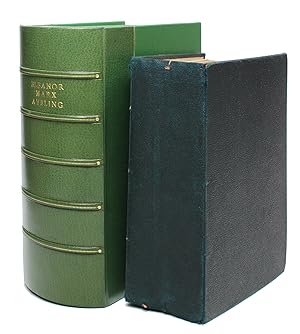
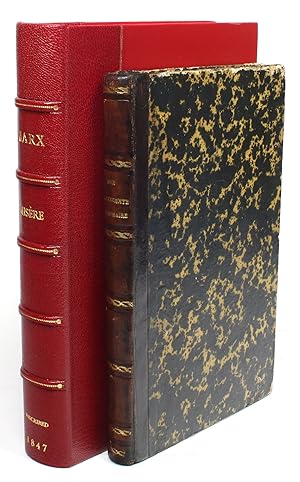

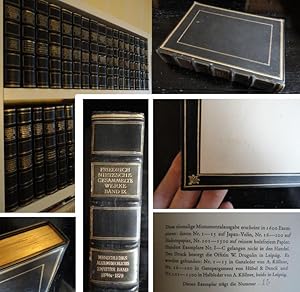
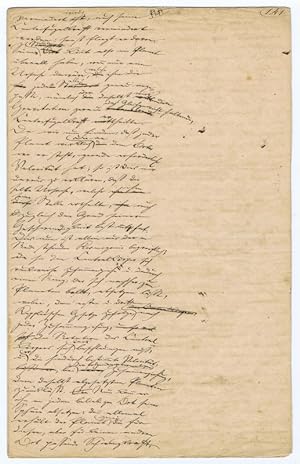
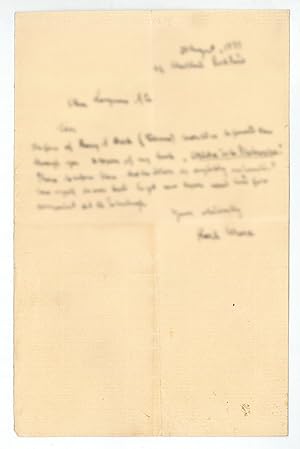
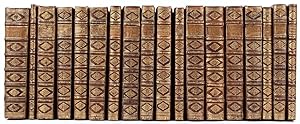
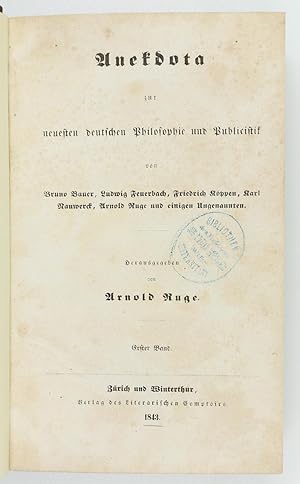
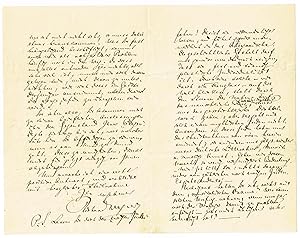
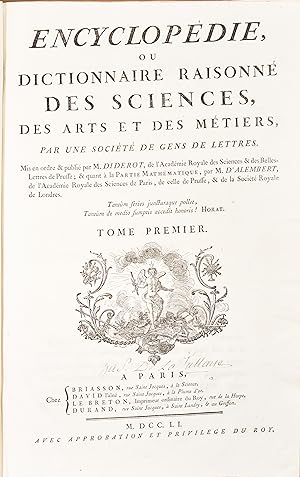
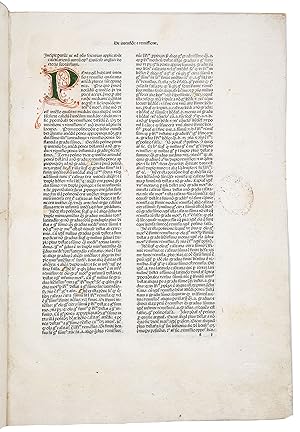
![Image du vendeur pour Philosophie zoologique, ou exposition des considérations relatives à l'histoire naturelle des animaux; a la diversité de leur organisation et des facultés qu'ils en obtiennent ; aux causes physiques qui maintiennent en eux la vie et donnent lieu aux mouvemens qu'ils exécutent ; enfin, à celles qui produisent, les unes le sentiment, et les autres l'intelligence de ceux qui en sont doués. Tome premier [- seconde] mis en vente par SOPHIA RARE BOOKS](https://pictures.abebooks.com/inventory/md/md31167879461.jpg)

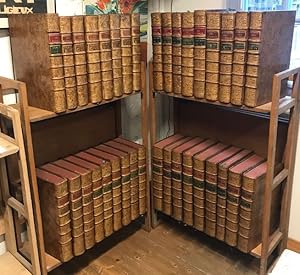
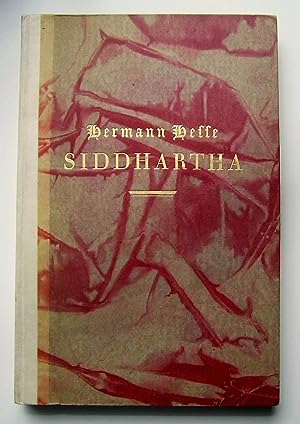
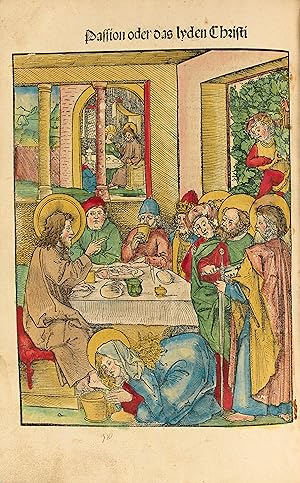
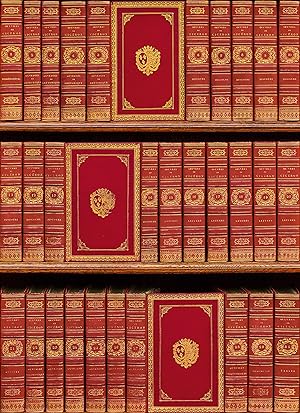
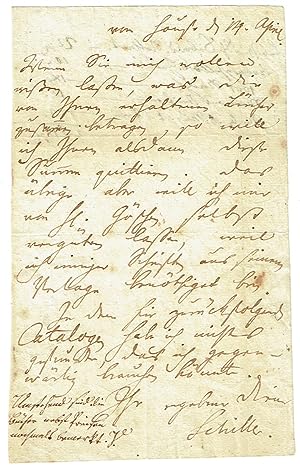

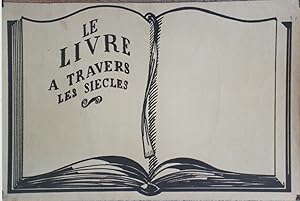
![Image du vendeur pour Herrn Eugen Dühring's Umwälzung der Wissenschaft. Von Friedrich Engels. [I. Philosophie.] II. Politische Oekonomie. Sozialismus. mis en vente par Antiquariat INLIBRIS Gilhofer Nfg. GmbH](https://pictures.abebooks.com/inventory/md/md30333576016.jpg)
![Image du vendeur pour De naturalium effectuum causis, sive de Incantationibus, Opus abstrusioris philosophiae plenum, & brevissimis historiis illustratum atque ante annox XXXV compositum, nunc primum uerò in lucem fideliter editum. Adiectis breuibus scholijs à Gulielmo Gra. - [ESTABLISHING THE ENLIGHTENMENT] mis en vente par Lynge & Søn ILAB-ABF](https://pictures.abebooks.com/inventory/md/md22877532810.jpg)
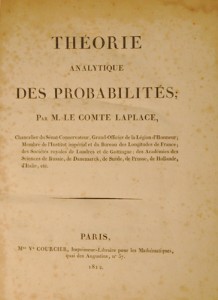
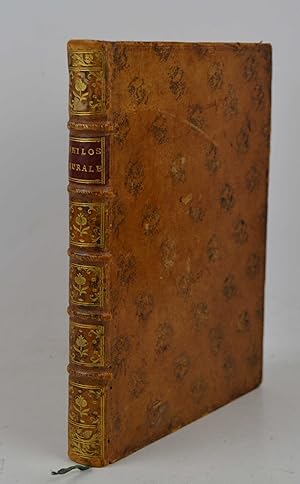
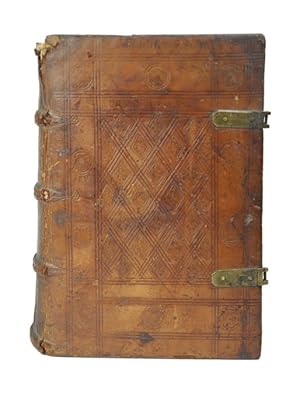
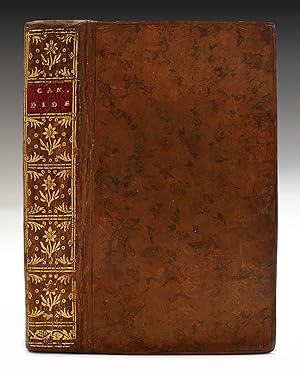
![Image du vendeur pour SOUTHERN TIBET. Discoveries in former times compared with my own researches in 1906-1908 by Sven Hedin. [vol. I] Lake Manasarovar and the sources of the great Indian Rivers. from the remotest antiquity to the end of the eighteenth century. [vol. II] Lake Manasarovar and the sources of the great Indian Rivers. from the remotest antiquity to the end of the eighteenth century to 1913. [vol. III] Transhimalaya. [vol. IV] Kara-Korum and Chang-Tang. [vol. V] Petrographie und Geologie von prof. Dr Anders Henning. [vol. VI] Part I. Die Meteorologischen Beobachtungen Bearbeitet von prof. Dr Nils Ekholm. Part II. Les Observations Astronomiques calculées et rédigées par le Dr K. G. Olsson. Part III. Botany by prof. Dr C. H. Ostenfeld ( ) mis en vente par LIBRAIRIE HÉRODOTE JEAN-LOUIS CECCARINI](https://pictures.abebooks.com/inventory/md/md4973692396.jpg)
